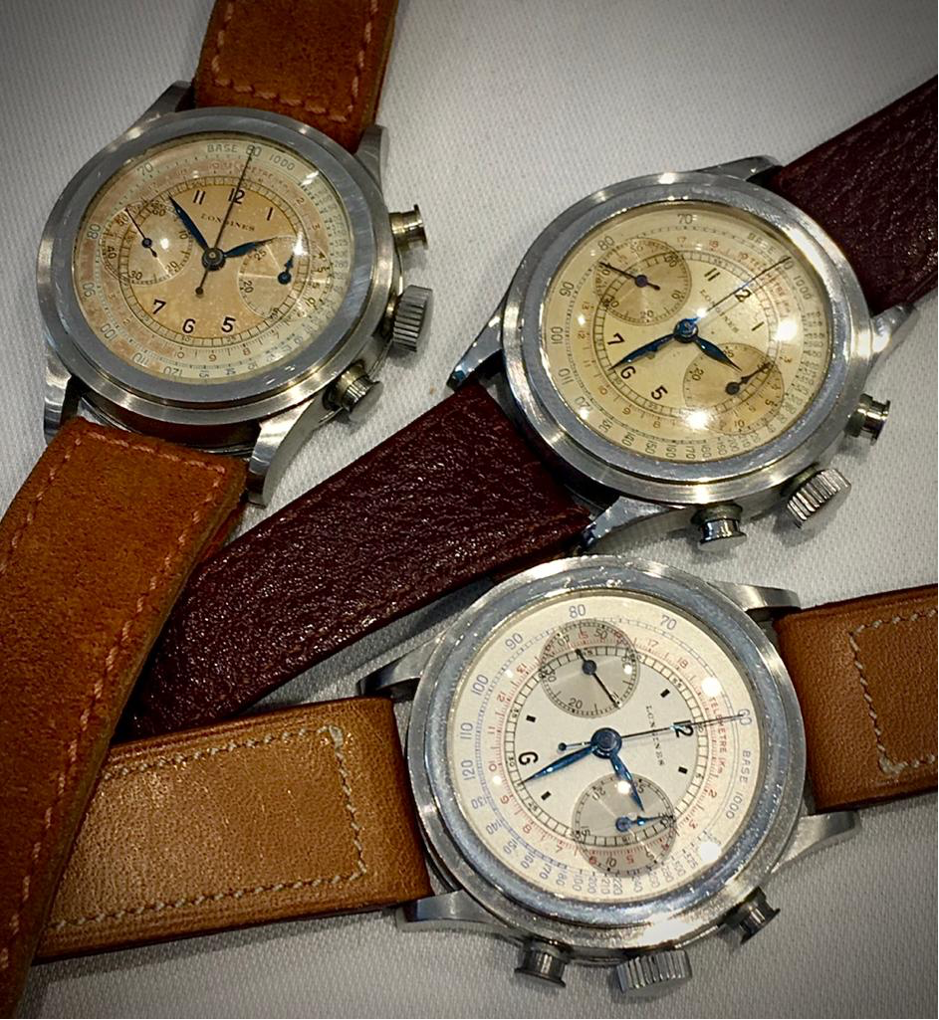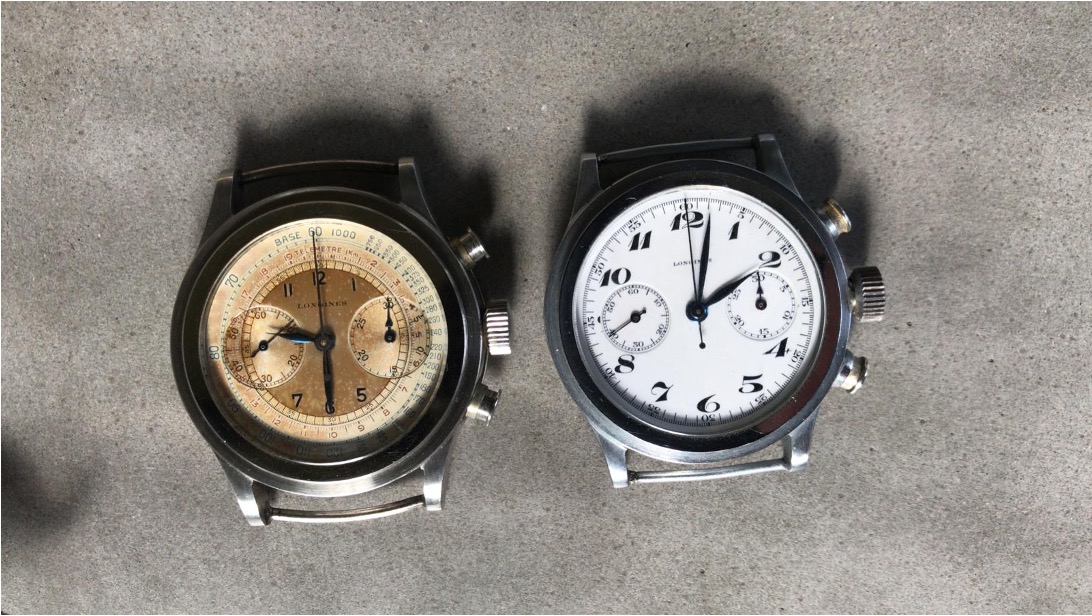Longines
The Ultimate Guide to the Longines Chronograph 13ZN ‘Pulsanti ad Ombrello’ or ‘Mushroom Pusher’
Longines
The Ultimate Guide to the Longines Chronograph 13ZN ‘Pulsanti ad Ombrello’ or ‘Mushroom Pusher’
In 1913, a poll commissioned by the New York Times asked the American public which brand of luxury watch they would like to own if price were no object. Of that poll, a staggering 92 percent replied that, under those circumstances, they would own a Longines. Up until the mid 1940s, a Longines watch was more prestigious and better in quality than both its Omega and Rolex counterparts, second probably only to Patek Philippe (which, incidentally, did not use in-house movements). Longines was one of the few completely vertically integrated companies at the time and, therefore, its vintage pieces are now becoming highly sought after. Very few people today realise that Longines was, in fact, the superlative chronograph and chronometer manufacture of the time.
All these factors combined make collecting vintage Longines an extremely interesting and desirable proposition.
A Brief History of the 13ZN
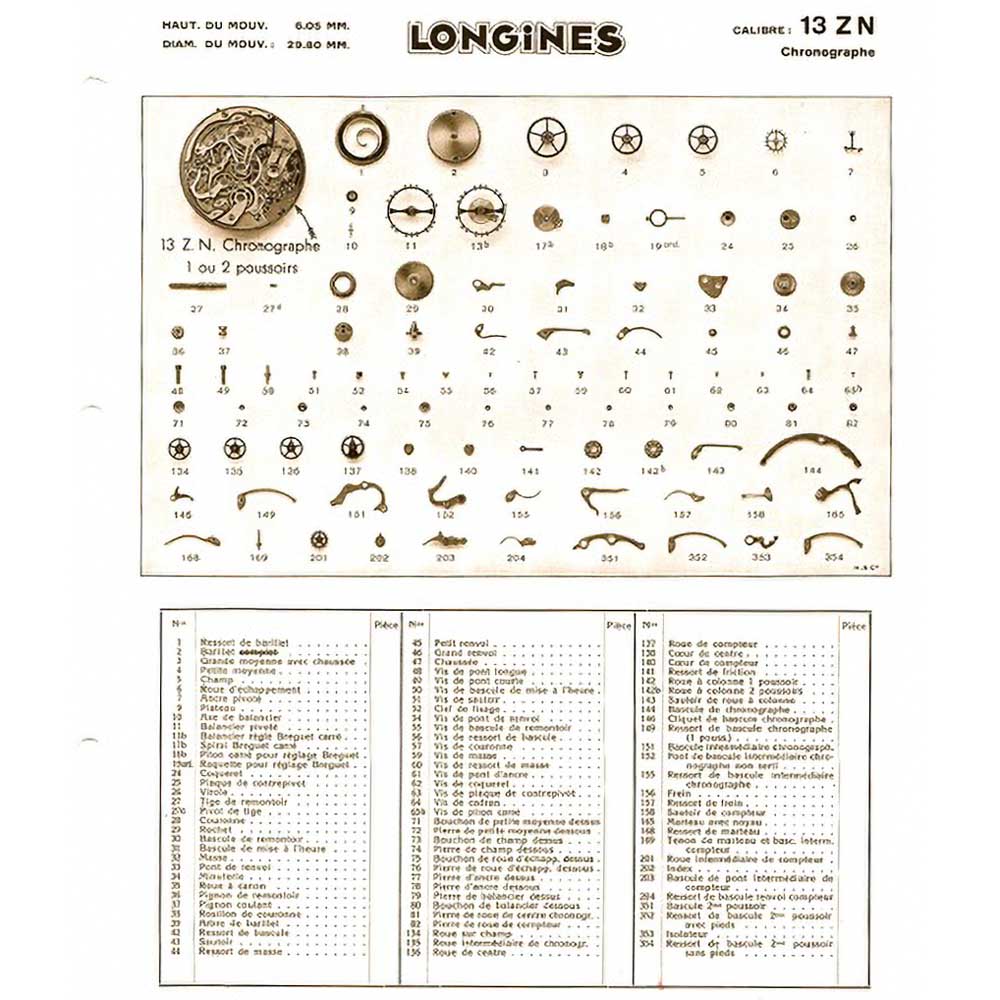
Longines spare parts catalogue no. 8 in French
Used in a variety of cases — with semi-instantaneous counters, flyback, without flyback, monopusher and centre minutes — Longines had all the tools needed to make all the steel parts “in-house” by the mid-’30s. This was during a period where chronographs were in high demand, and very few companies had their own in-house produced movement.
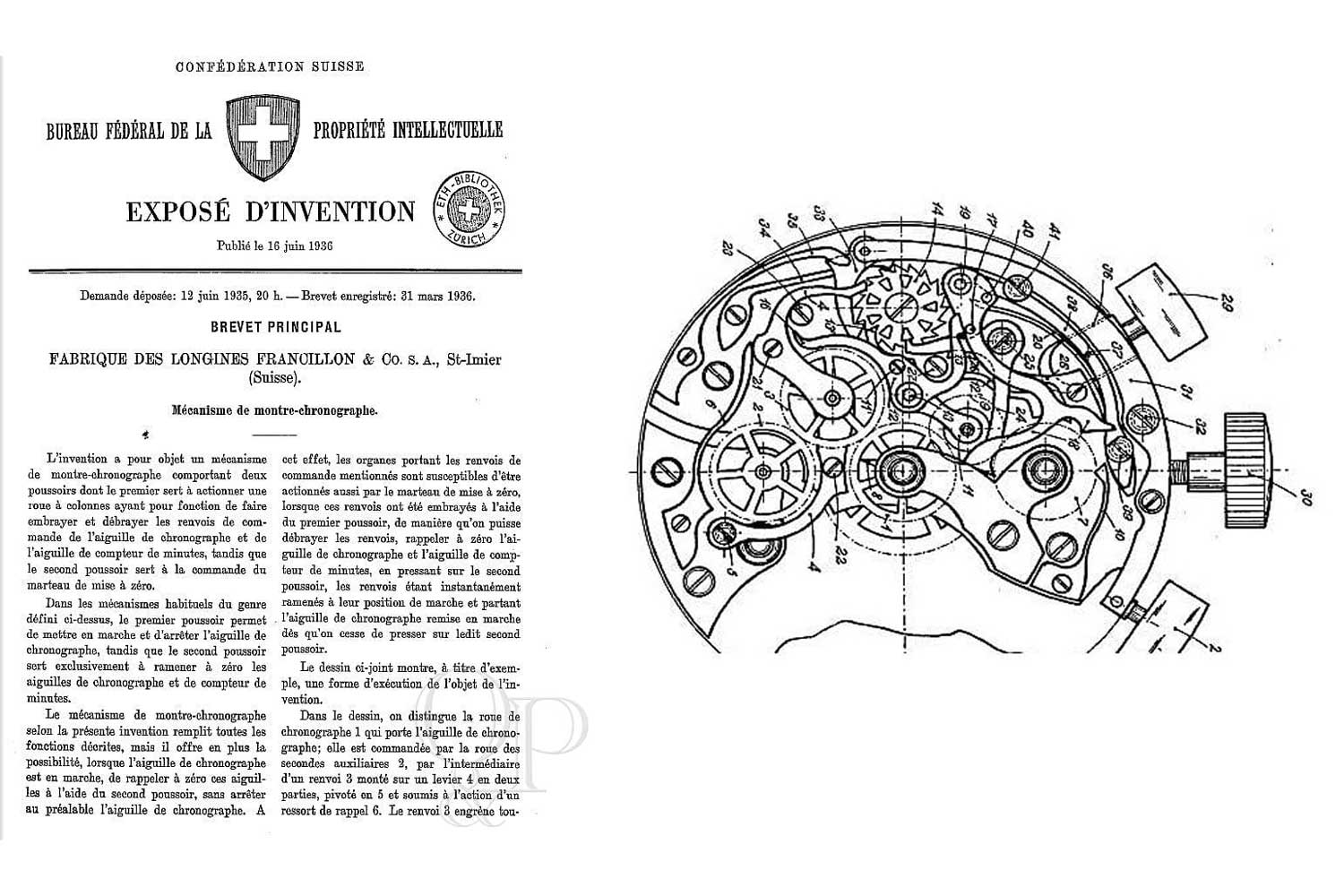
The 13ZN was the first calibre in which the patent was filed and widely used for flyback. Seen here is the original patent for the flyback mechanism and the image submitted for the flyback patent. (Image: orologi.forumfree.it)
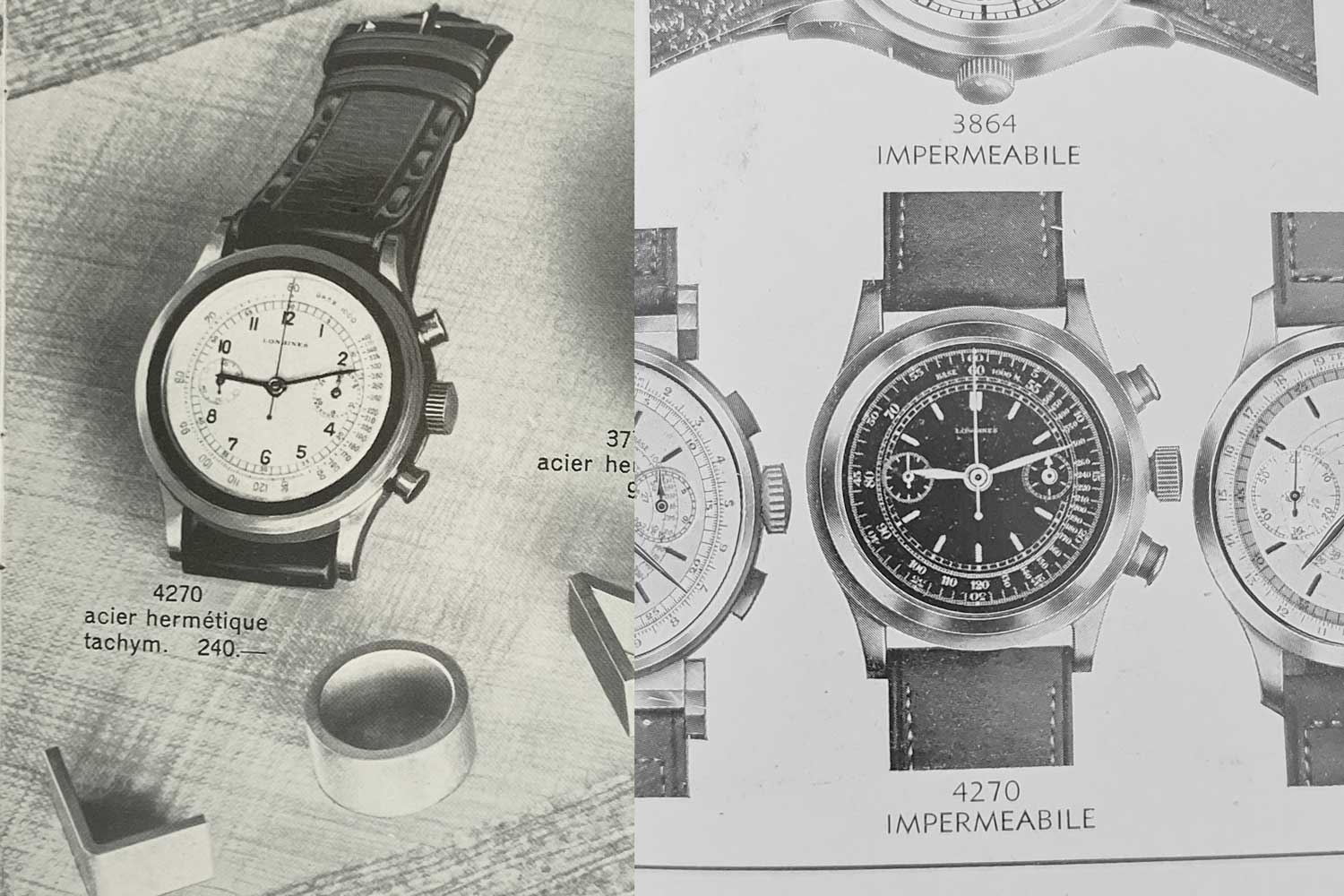
Two catalogue images from the end of the ’30s advertising a reference 4270 for sale. The words “acier hermétique tachym.” refer to the steel waterproof case of the watch and its tachymeter scale.
Longines Speak
To start with, I think it’s important to understand some of the terminology used by Longines:
Cliché Numbers
There are cliché numbers, or what collectors call reference numbers, that are the reference numbers as they would appear in the catalogues. This can be analogous to Rolex’s Submariner, where you’d get many references that all fall under the umbrella of the Submariner collection. Each Longines cliché has various order numbers that can be found on the casebacks, which are in effect case batch numbers.
Waterproof Pairing Numbers
Then there are also additional two- or three-digit numbers, located on the casebacks and repeated also on the lugs. Longines used these as waterproof pairing numbers, so that cases and casebacks were put correctly back together along the assembly line. I believe these to be in sequence within the order numbers, but these numbers do not necessarily correlate to the quantity of watches made within that order number.
Serial Numbers
Serial numbers are always found on the movements and sometimes also found on the case. Through the Longines Electronic Archive (LEA), they are able to use these serial numbers to correspond with the reference number (cliché) and order number on the caseback, thus confirming the watch is all matching. We now know the correct serial ranges for the various order numbers.
There is only one cliché for the 13ZN “Mushroom Pusher”, and that is the reference number 4270. There was potential for a smaller Mushroom Pusher with cliché 4813; unfortunately, the reference was cancelled.
The order numbers for reference 4270 are as follows: 2010, 2352, 2191, 2160 and 2475. These numbers typically appear on the casebacks of the watches but to confuse things a bit, the cliché number 4270 has also been seen on one caseback, and there are even a few anomalies where there is no order number at all. All these various watches with varying order numbers are very similar. Although some have small differences in details, which are unique to the order number, they are in essence the same watch.
The types of dials that these watches were born with differ in terms of style. Dials were manufactured by Stern Frères and Flückiger & Cie. (Zélim Jacot) of St-Imier.
Both made extremely high quality dials for the best watch manufacturers during the period. The dials are all the same in diameter and come in a variety of styles — some with tachymeter and telemeter scales, others with single scale or even no scale at all. Depending on the dial maker, there are small differences between the two companies’ dials, most notably in the style of fonts used.
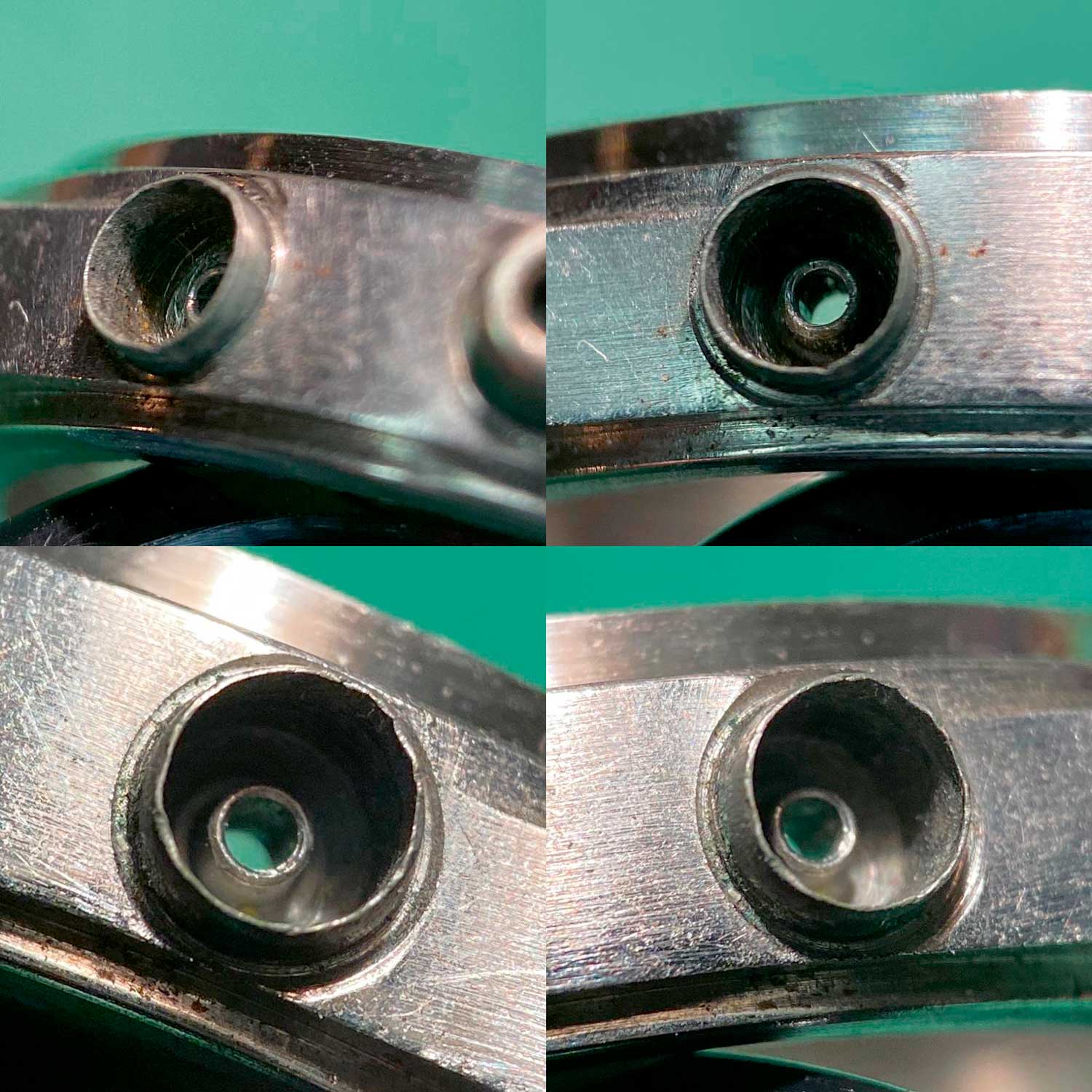
These images show how the middle case is machined to house the collar to the pushers and inserted halfway through the case. Originally, the pushers would have cork or similarly “elastic” waterproof material to help achieve the watertightness as described in the patent.
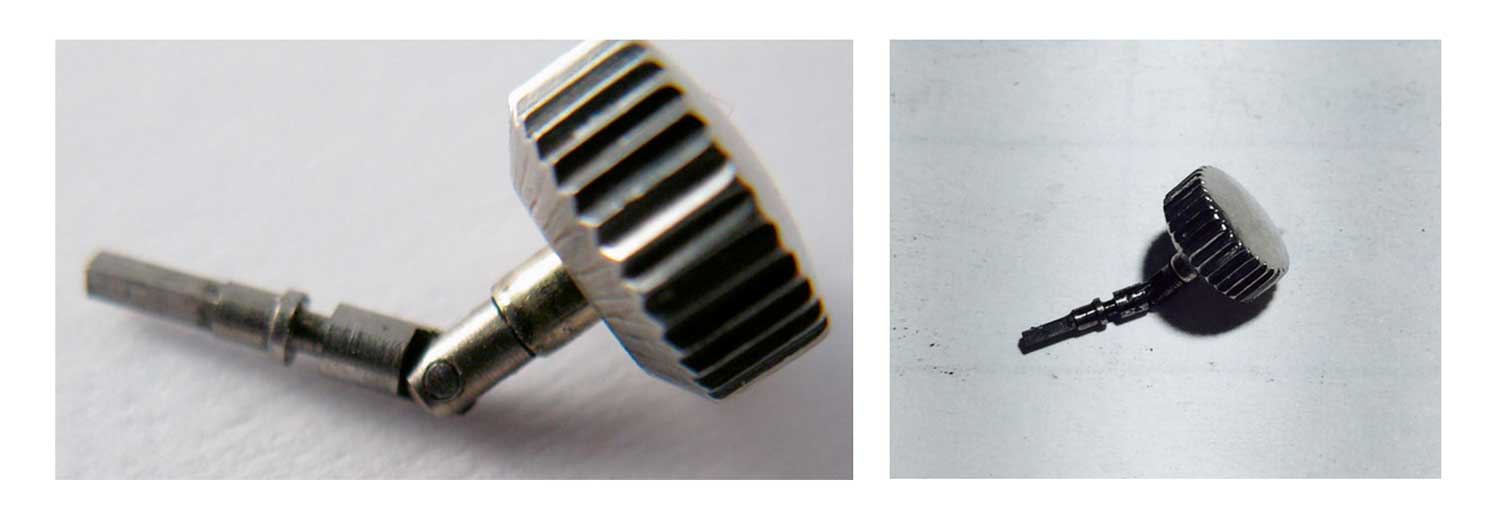
Another image showing the crown with the two stems. This very distinctive crown was used across all order numbers of the ref. 4270. (Image: Renato Zamberlan)
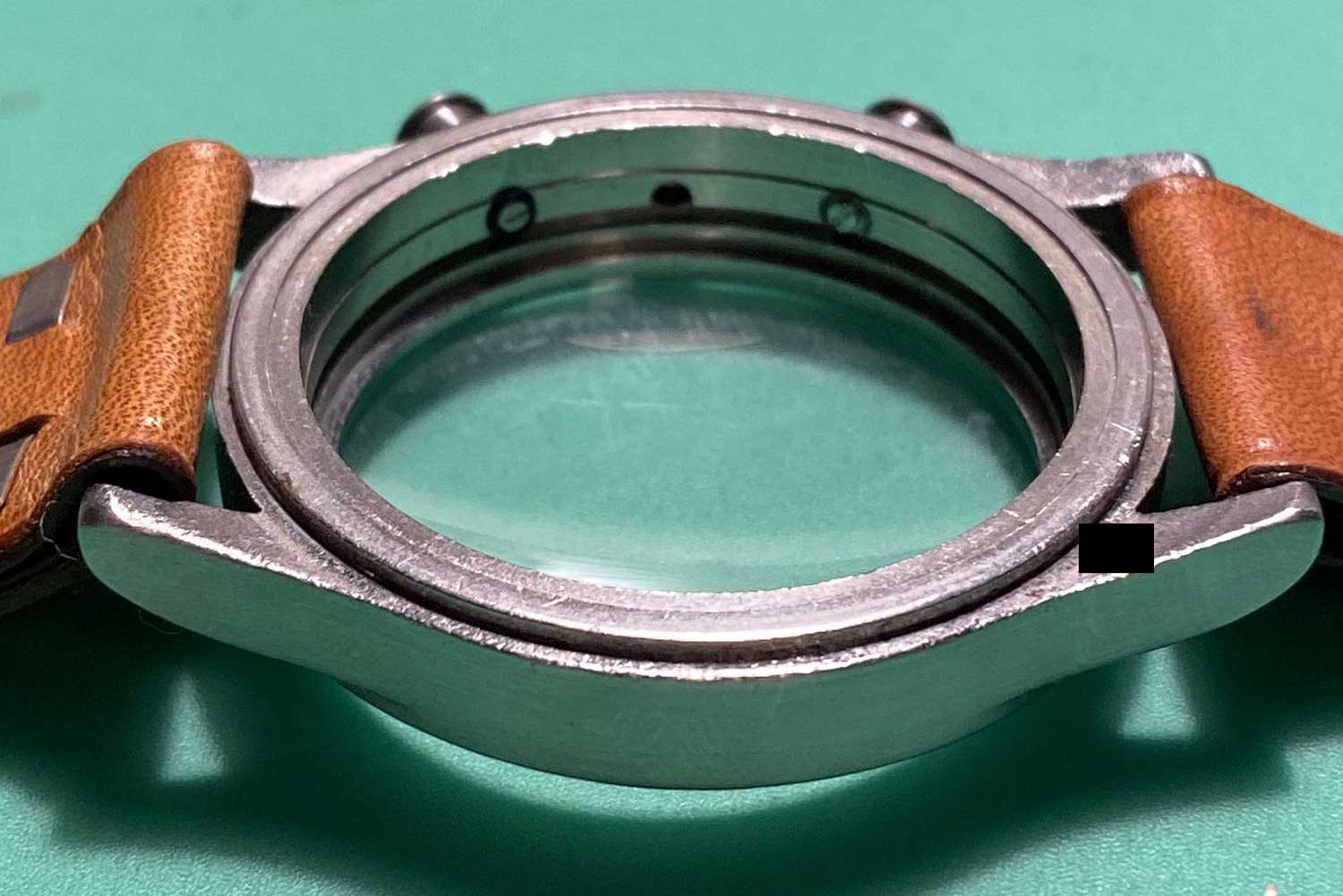

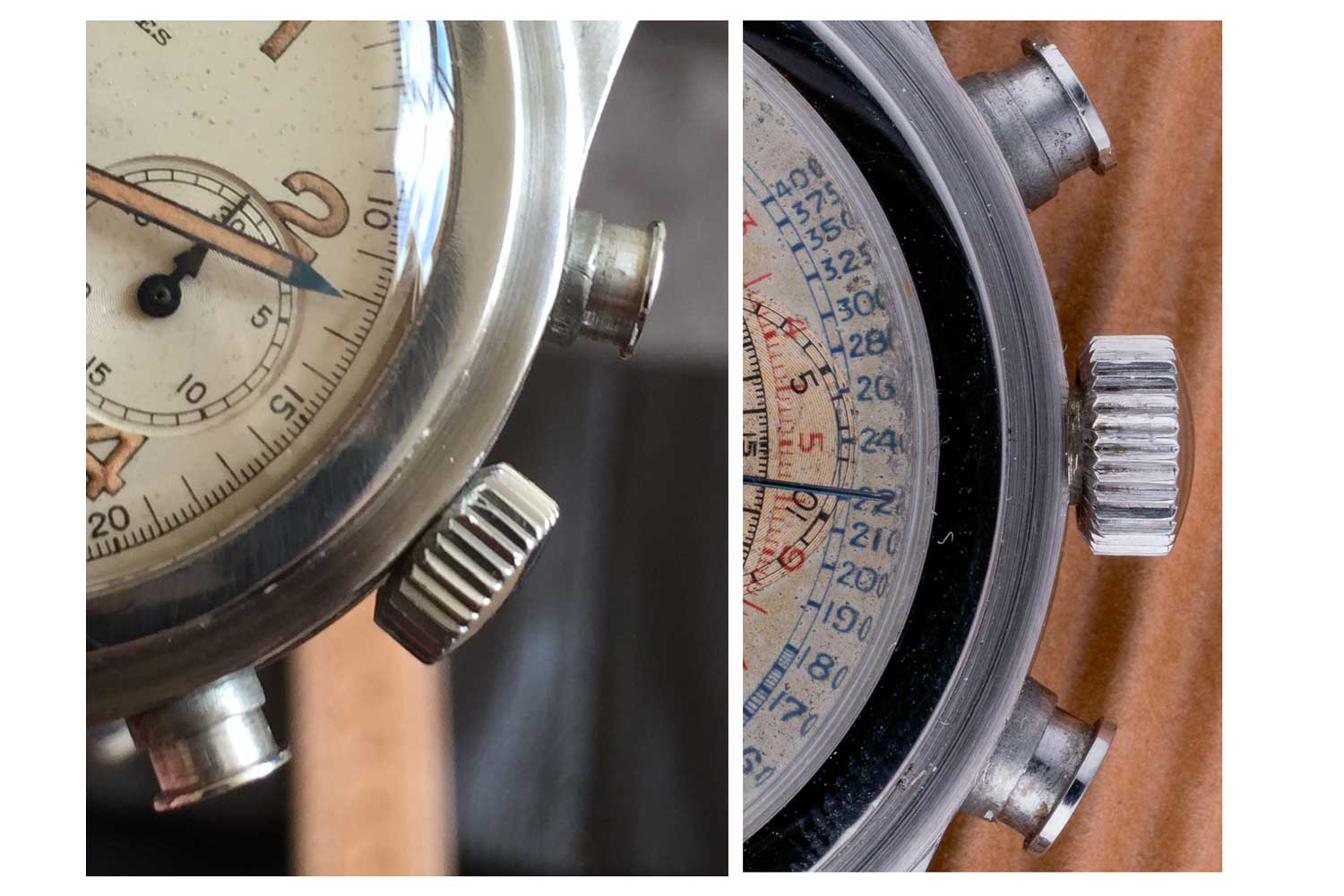
The crown on the ref. 4270 is a very thick waterproof crown, nicknamed “Millerighe” by the Italian collectors. It has two stems, which allow for easier movement of the crown. The crown has 24 teeth, like other Longines crowns from the period. Also seen here is a close-up of the mushroom pushers.
Longines used what they termed a “waterproofing sleeve” or an elastic waterproof material, which can be squeezed and will squeeze back, thereby avoiding the spring-back you get in normal pushers, which is the point that is the most vulnerable in terms of water leakage through a standard pusher system.
To achieve this elastic sleeve, Longines used cork, which was inserted into a closed space created between the pusher body, the pusher stem and the guiding tube, so that the watertightness sleeve can be squeezed in axis when pressure is exerted, and when released, it regains its normal shape, returning the pusher and the stem to its original position.
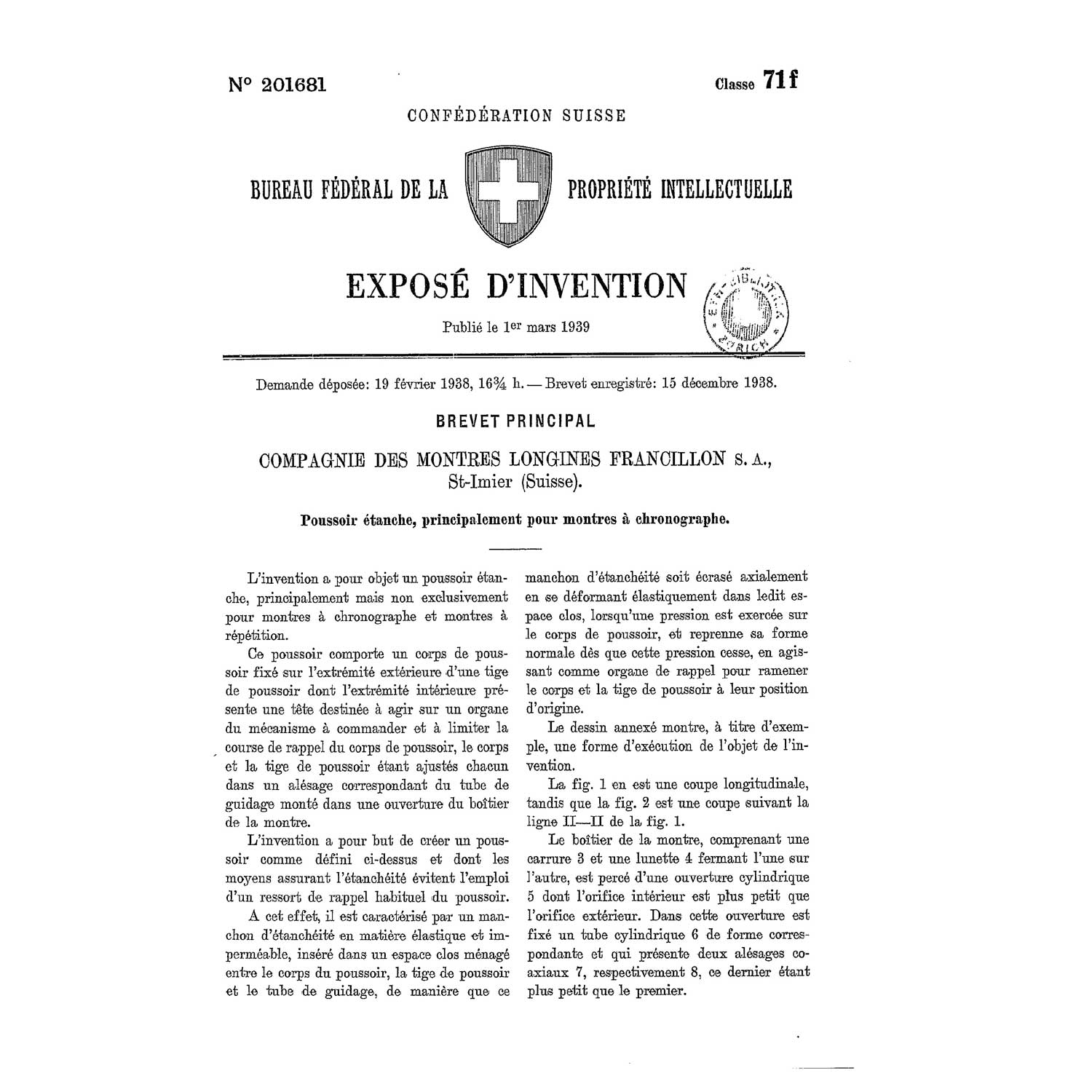
The patent for the “waterproof pusher, for chronograph watches” or what collectors now call “mushroom” or “ombrello” pushers due to the shape.
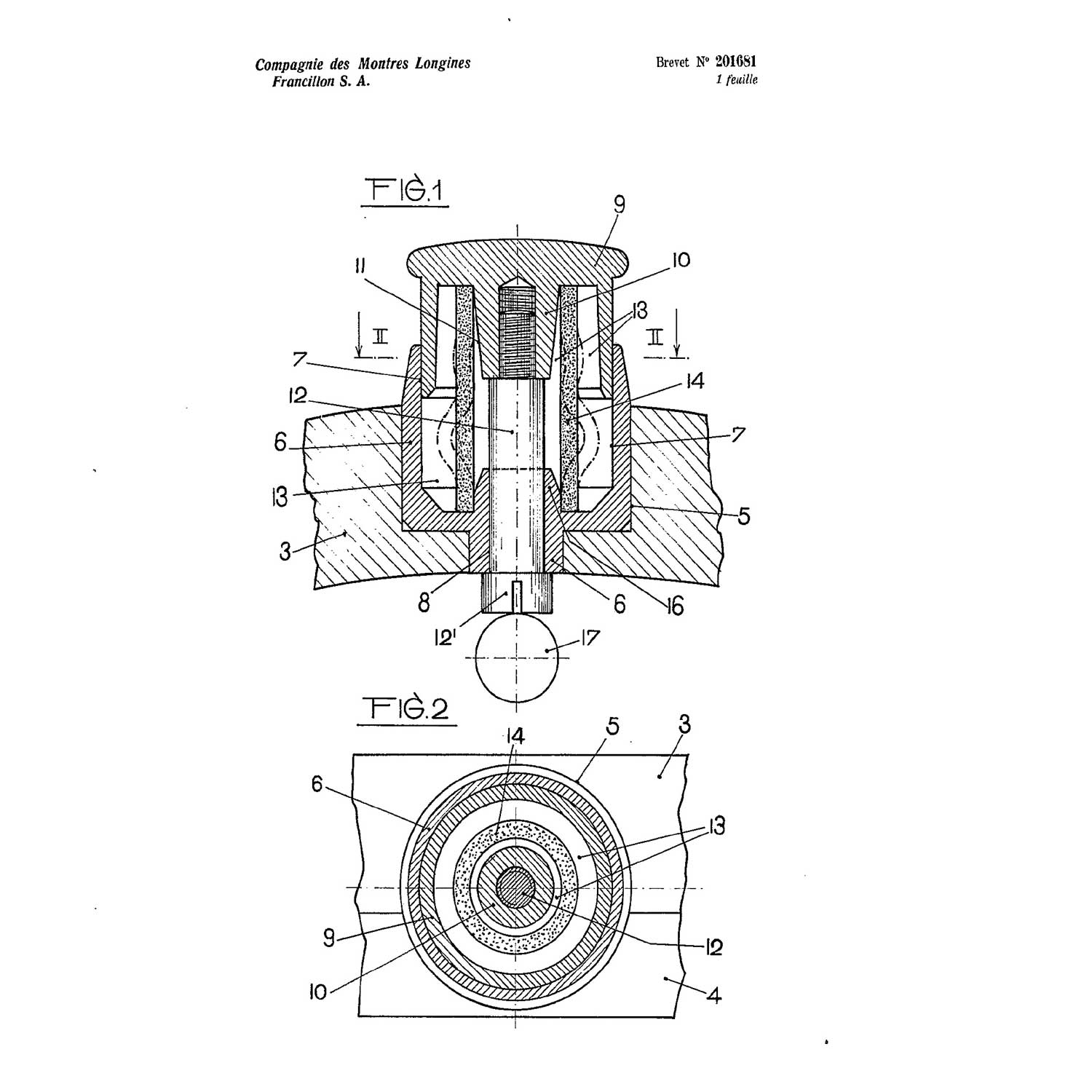
An image from the Longines archives providing details on cliché 4270.
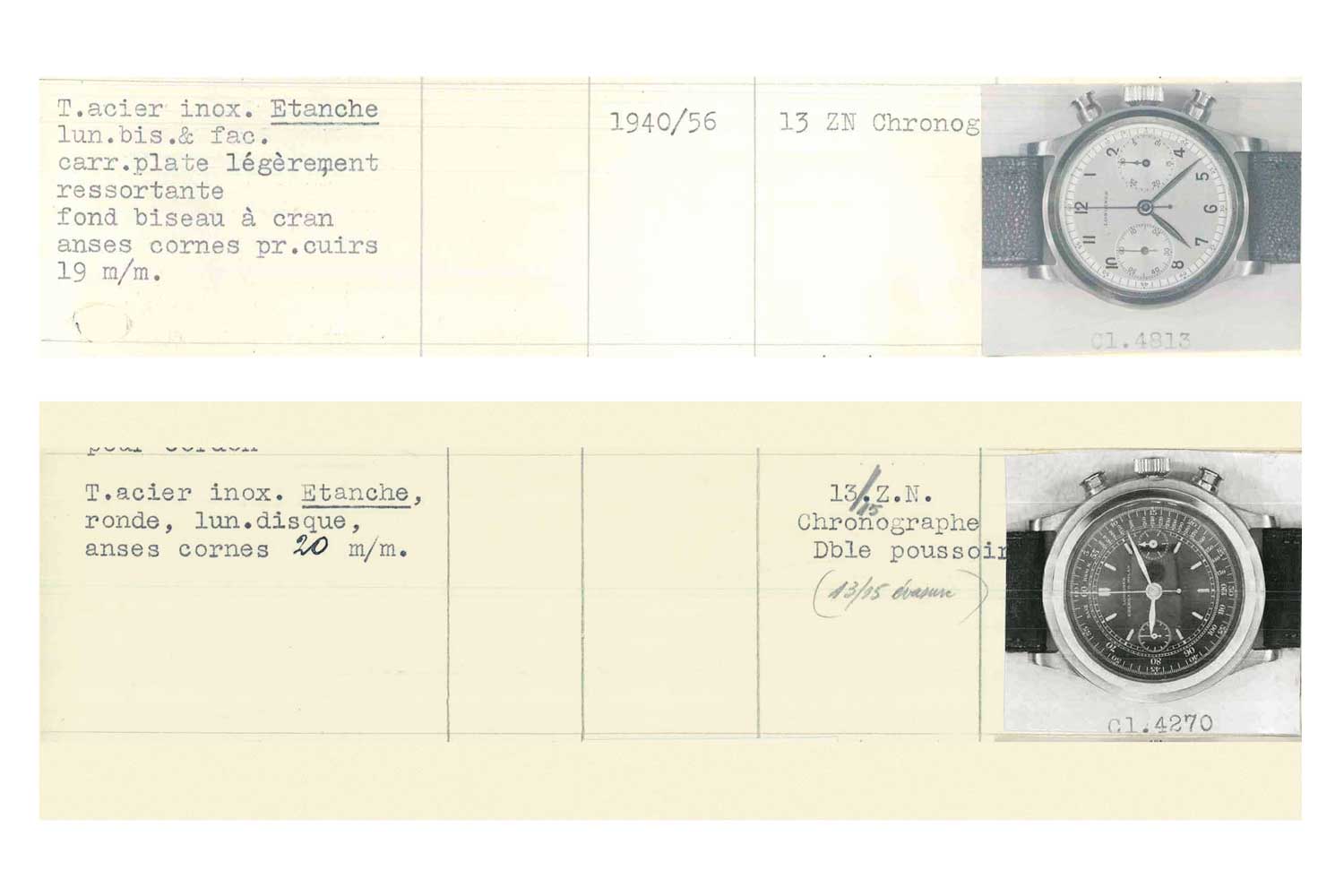
Images from Longines archives, this with Cliché 4813. (Must be noted that only one example (a prototype) has ever been seen with ref 4813 and mushroom pushers, usually the ref has pump pushers).
Reference 4270 IN 18K Gold
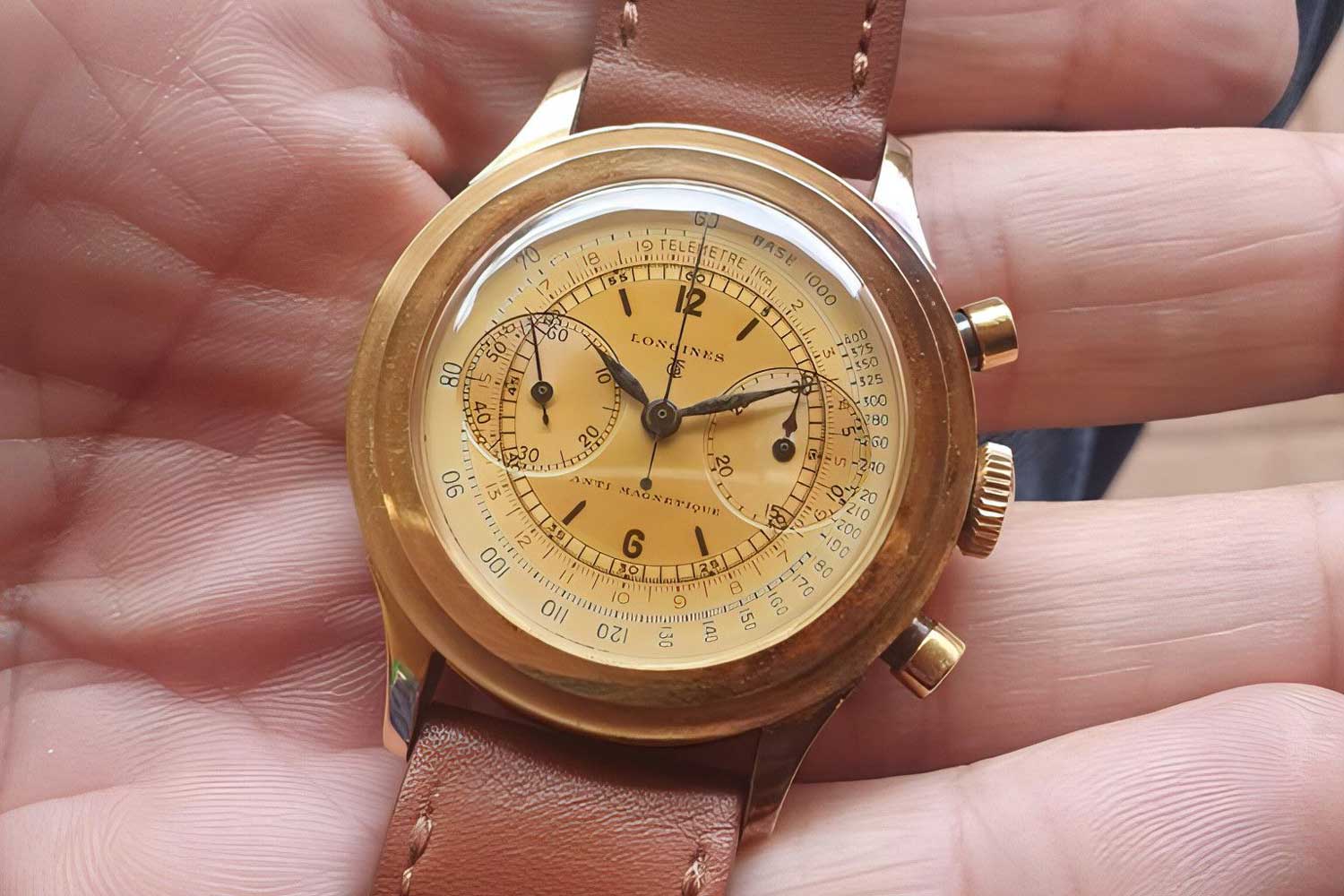
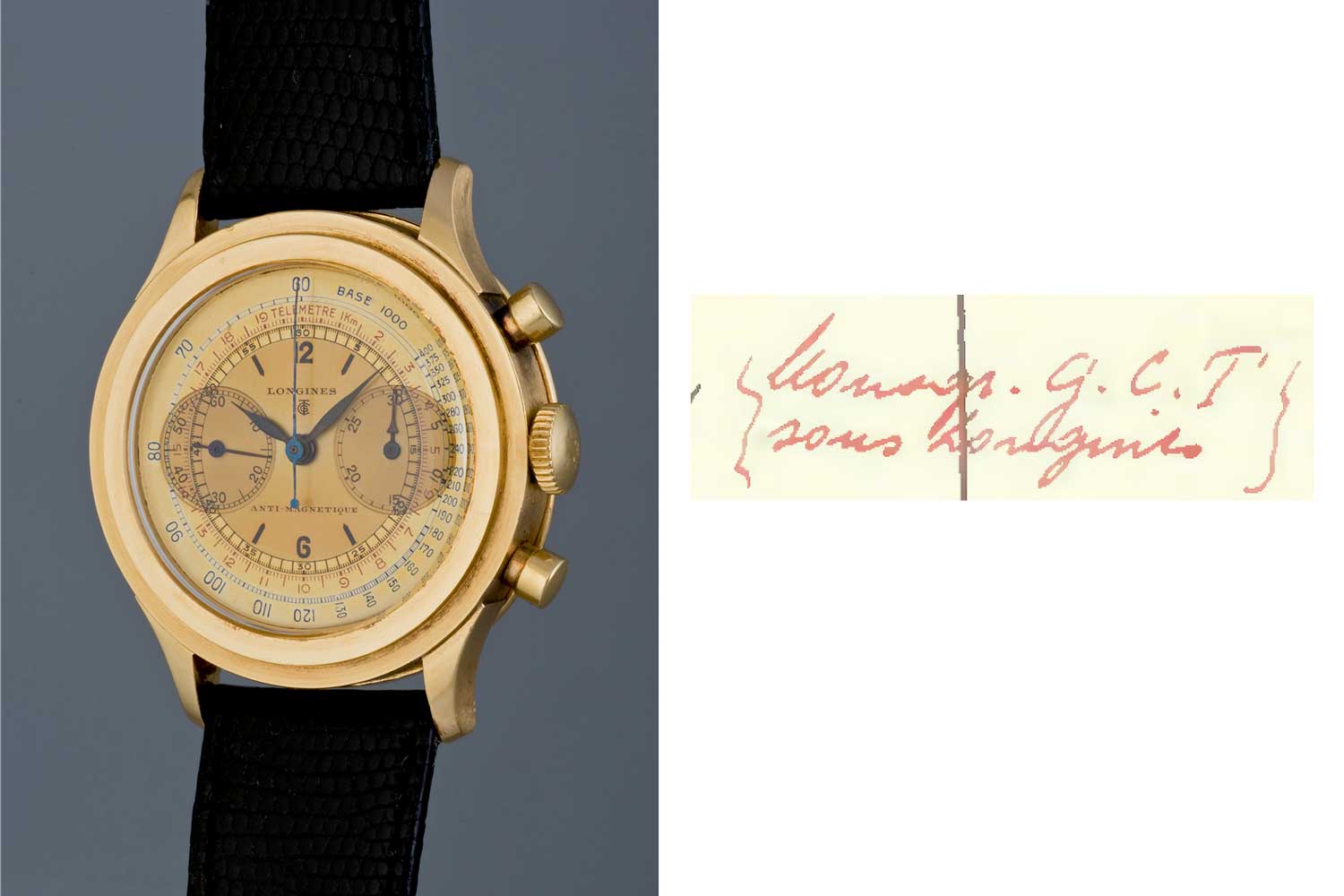
With the help of the Longines archives, the mysterious logo on the dial of the gold ref. 4270 was deduced to contain the abbreviation “G.C.T”. The same logo below the Longines font can be found in another time-only watch with corresponding records at the LEA. The meaning of the logo, however, remains elusive, but it most likely refers to a retailer.
Order 2191
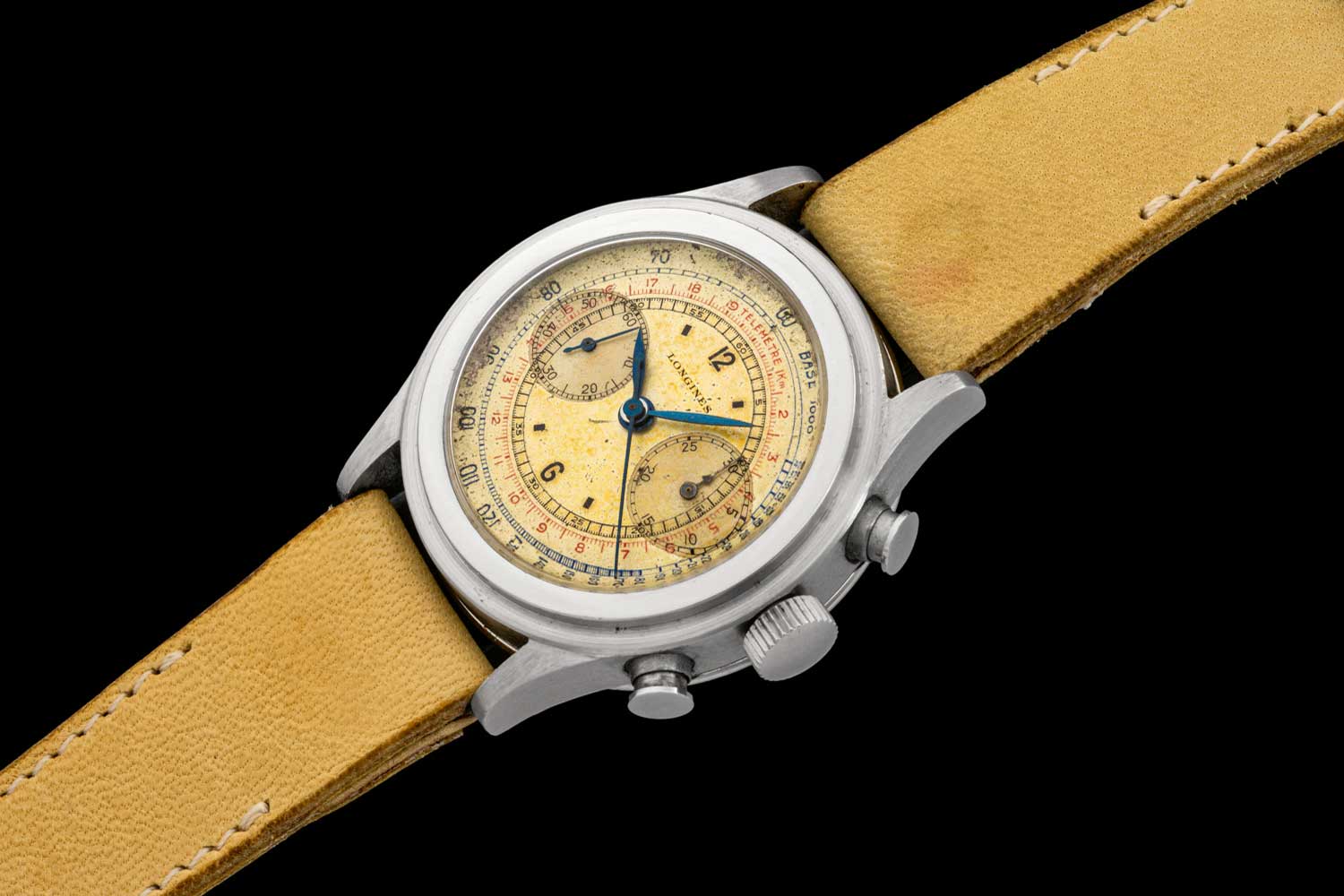
An extremely rare (one of only four known to the market) reference 4270 with order number 2191.
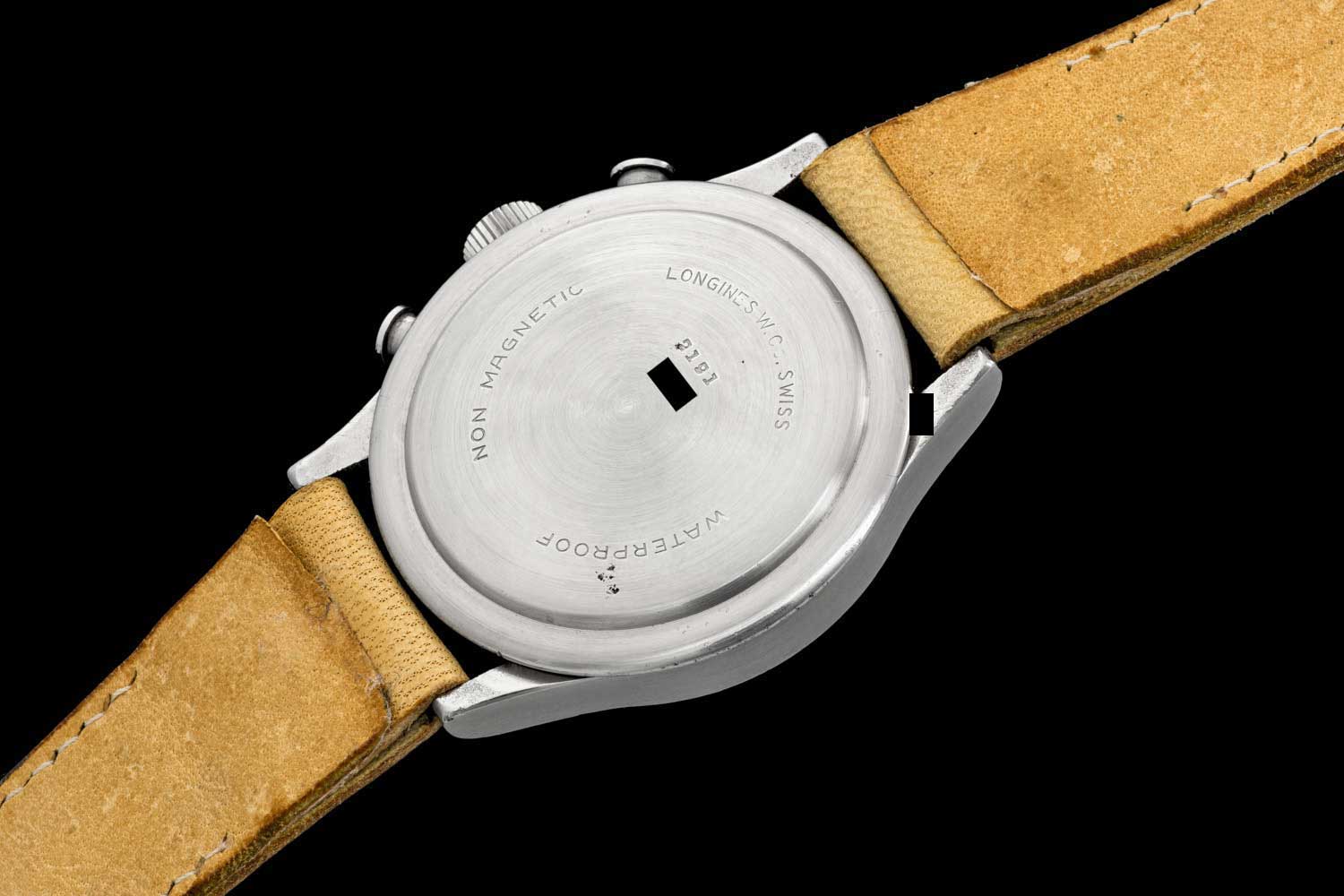
The stainless steel hard pressure caseback, stamped with “Longines W. Co. Swiss” along with “Waterproof” and “Non Magnetic”. It is also stamped with the order no. 2191 along with a two-digit number that matches the number on the upper left lug (also stamped).
Unlike order 2010, where Patent + Pending is stamped on the outer case back, here with order 2191, Modele + Depose is stamped on the inner case (as in registered patent).
The watch pictured is an extremely rare (one of only four known to the market) reference 4270 with order number 2191. Its two-tone matte silvered dial is by Stern Frères, with black Arabic numerals at 12 and 6, and baton indexes at 1, 5, 7 and 11. The dial also features tachymeter and telemeter scales, for calculating average speed and average distance, respectively.
It is interesting to note that, so far, all the known four examples of the 13ZN “Mushroom Pusher” chronographs with order number 2191 were originally sent to Chile. The serial range are also all very close (this is the same across all order numbers in that they have a specified serial range). The style of the dials can vary in their design, as is the case across all the order numbers.
The information from the Longines archives states, “Wrist chronograph in stainless steel bearing the reference 4270, the order number is 2191. It is fitted with a Longines manually wound mechanical movement, calibre 13ZN, and was invoiced on November 30th, 1940, to the company Weil, which was at that time, our [Longines’] agent for Chile.”
Order 2010
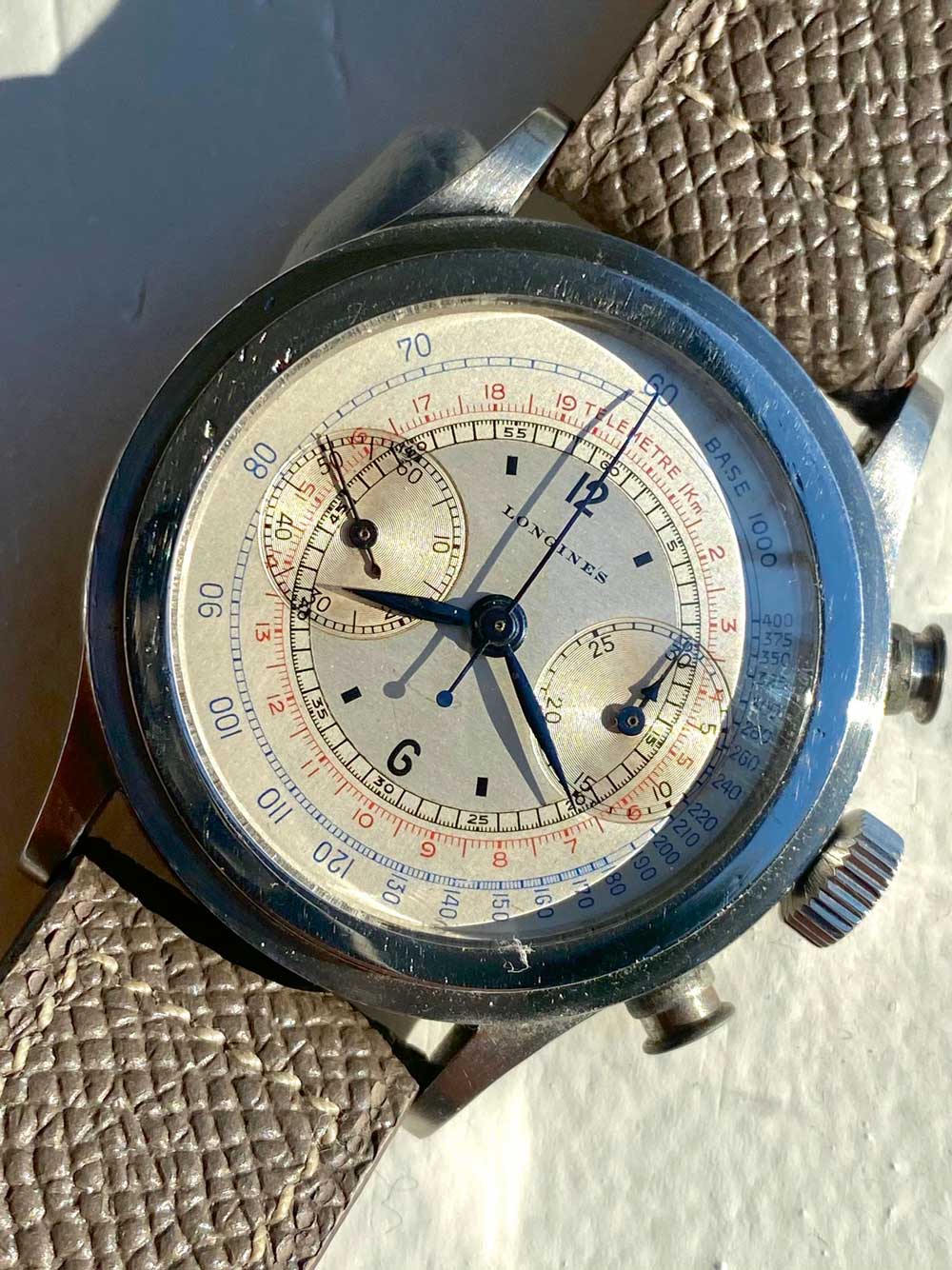
A great example of an order 2010 with a two-tone matte silvered dial by Stern Frères.
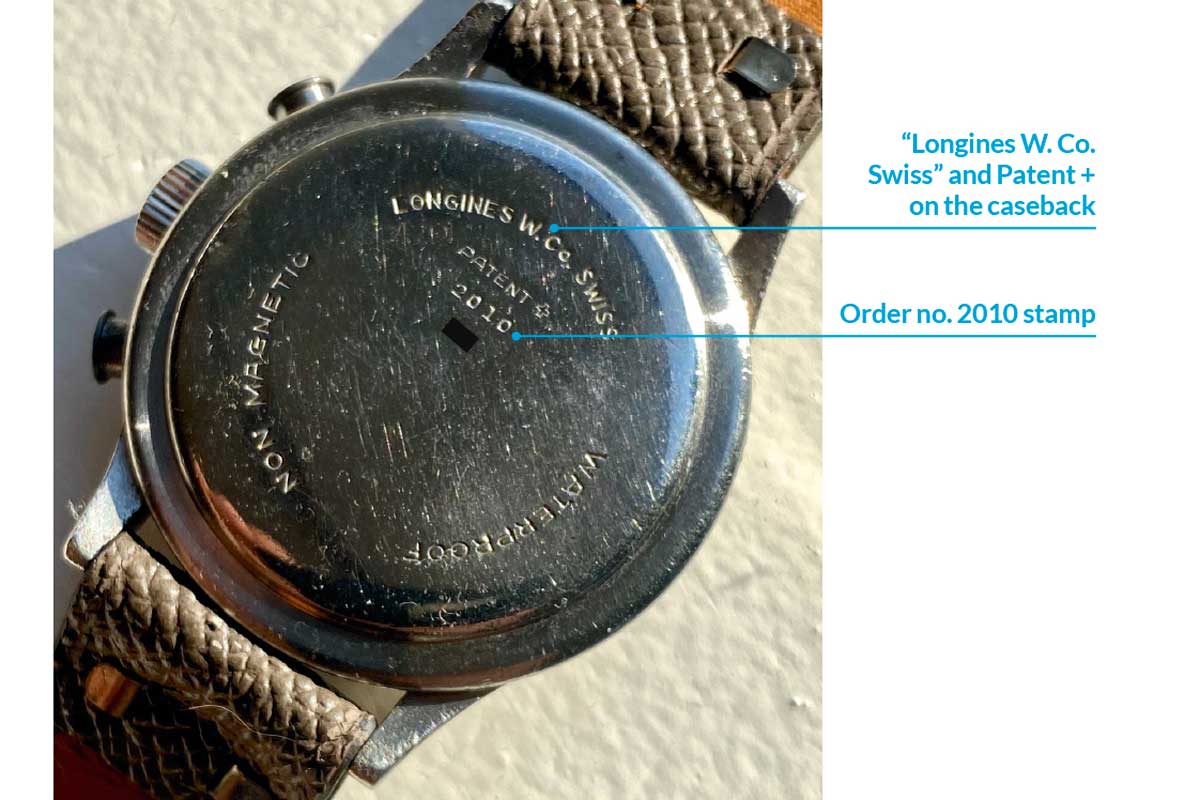
Longines W. Co. Swiss and Patent + on the watch’s caseback.
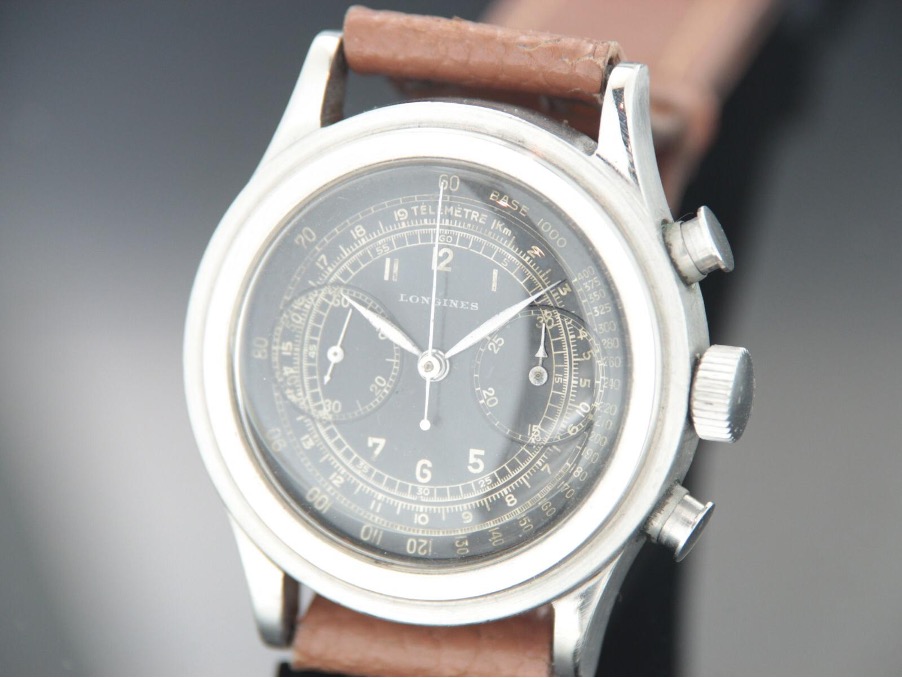
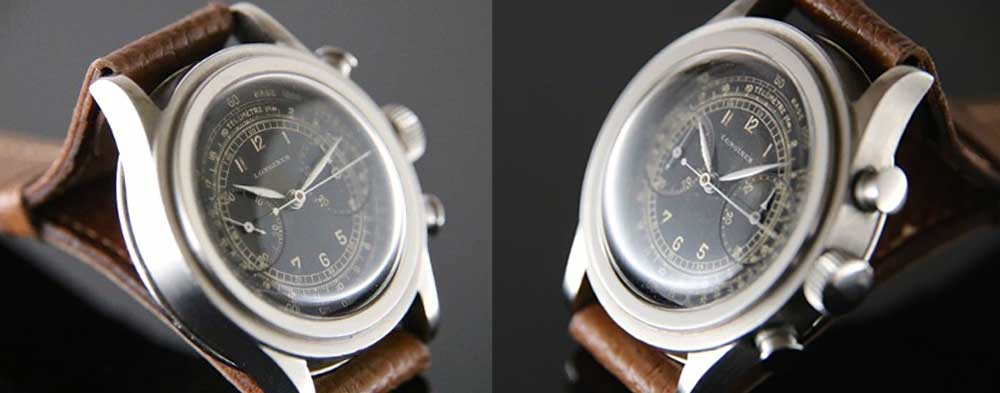
2010 case-back again with Patent Pending.
Unique Example with both Cliché 4270 and Order 2010 on Caseback
As is the case with many of these watches, there are a few anomalies. This order no. 2010 has the cliché 4270 also stamped on the caseback.
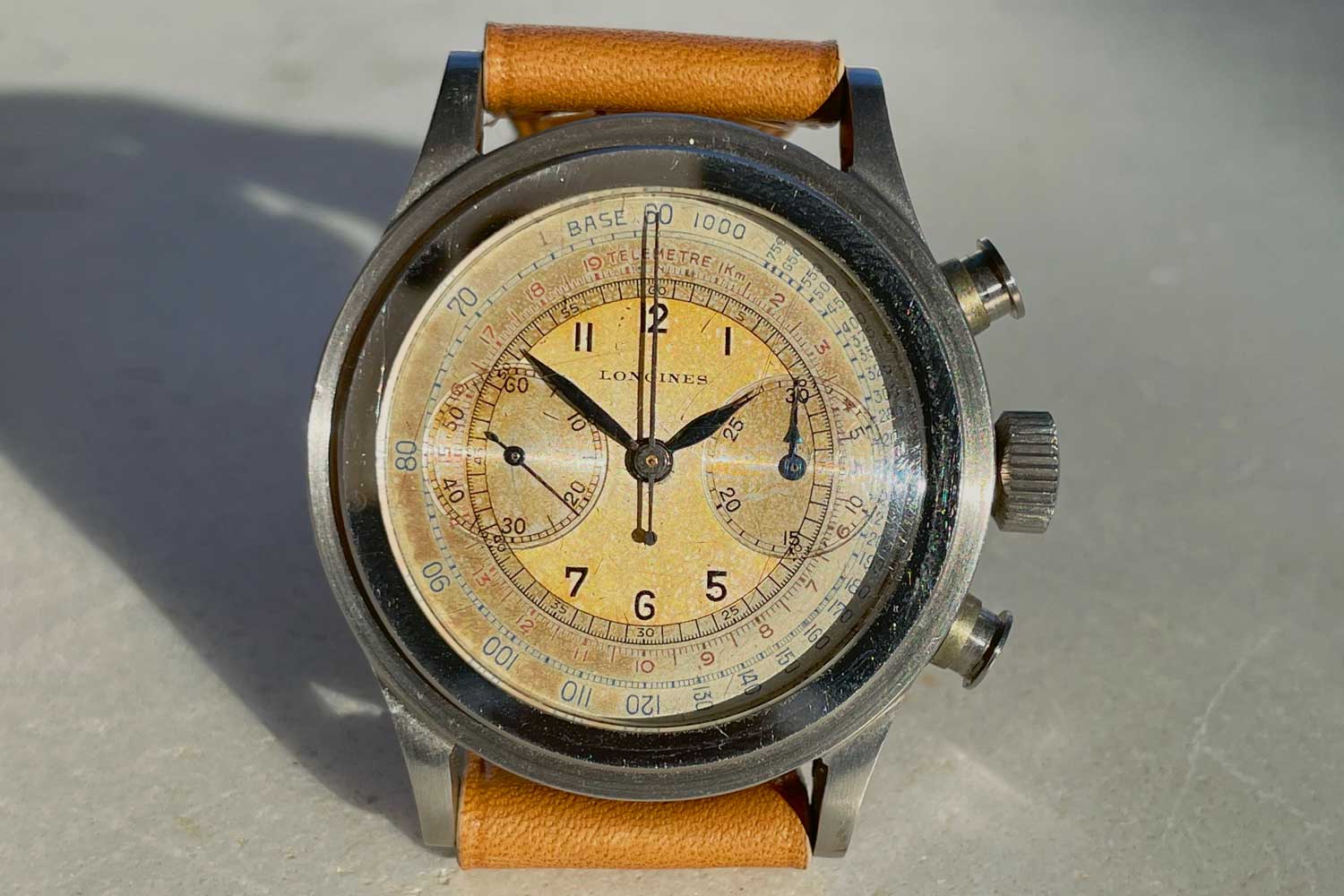
A unique example of order 2010 with the cliché also on the caseback
Order 2475
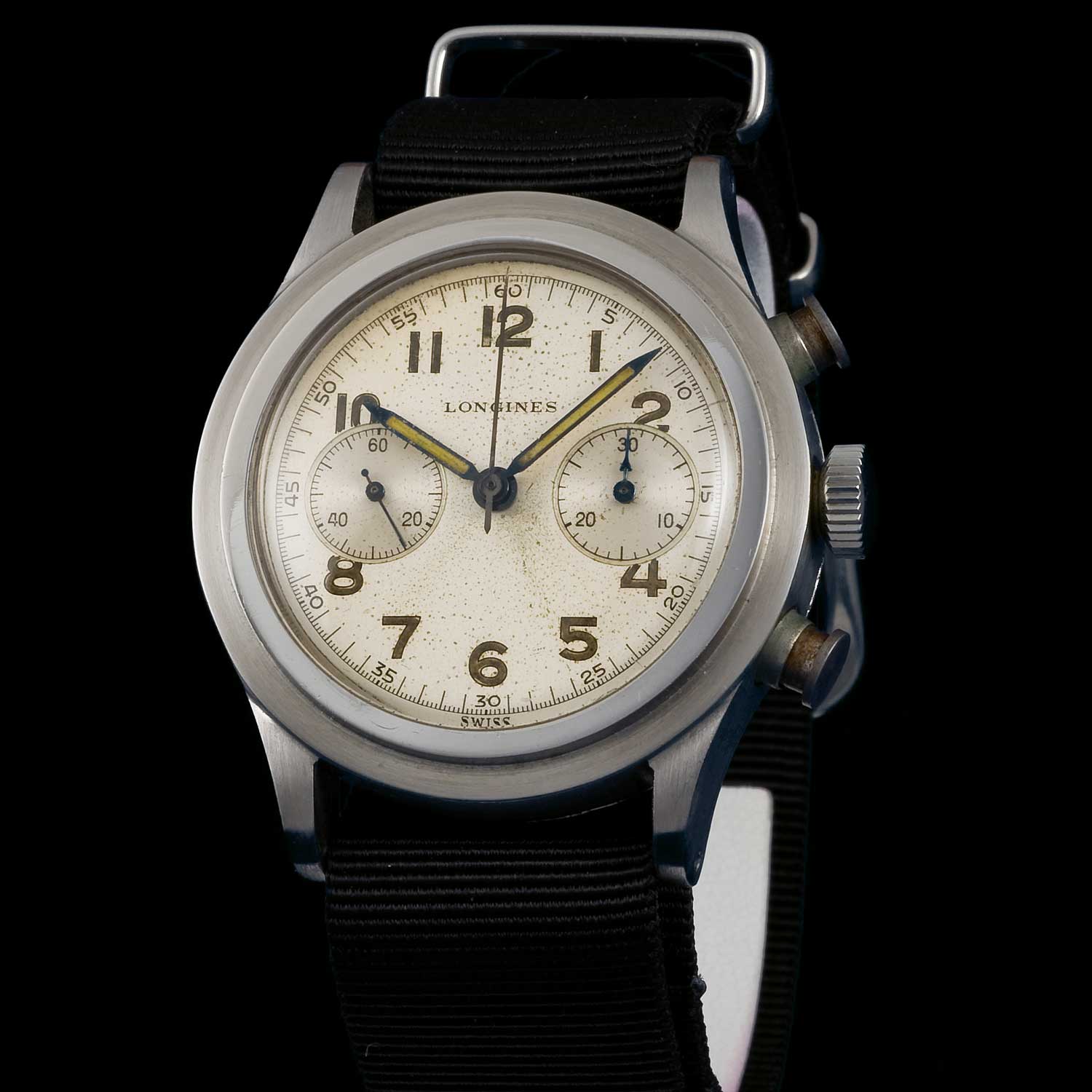
Order no. 2475 is a very interesting version of the 13ZN Chronograph “Mushroom Pusher”
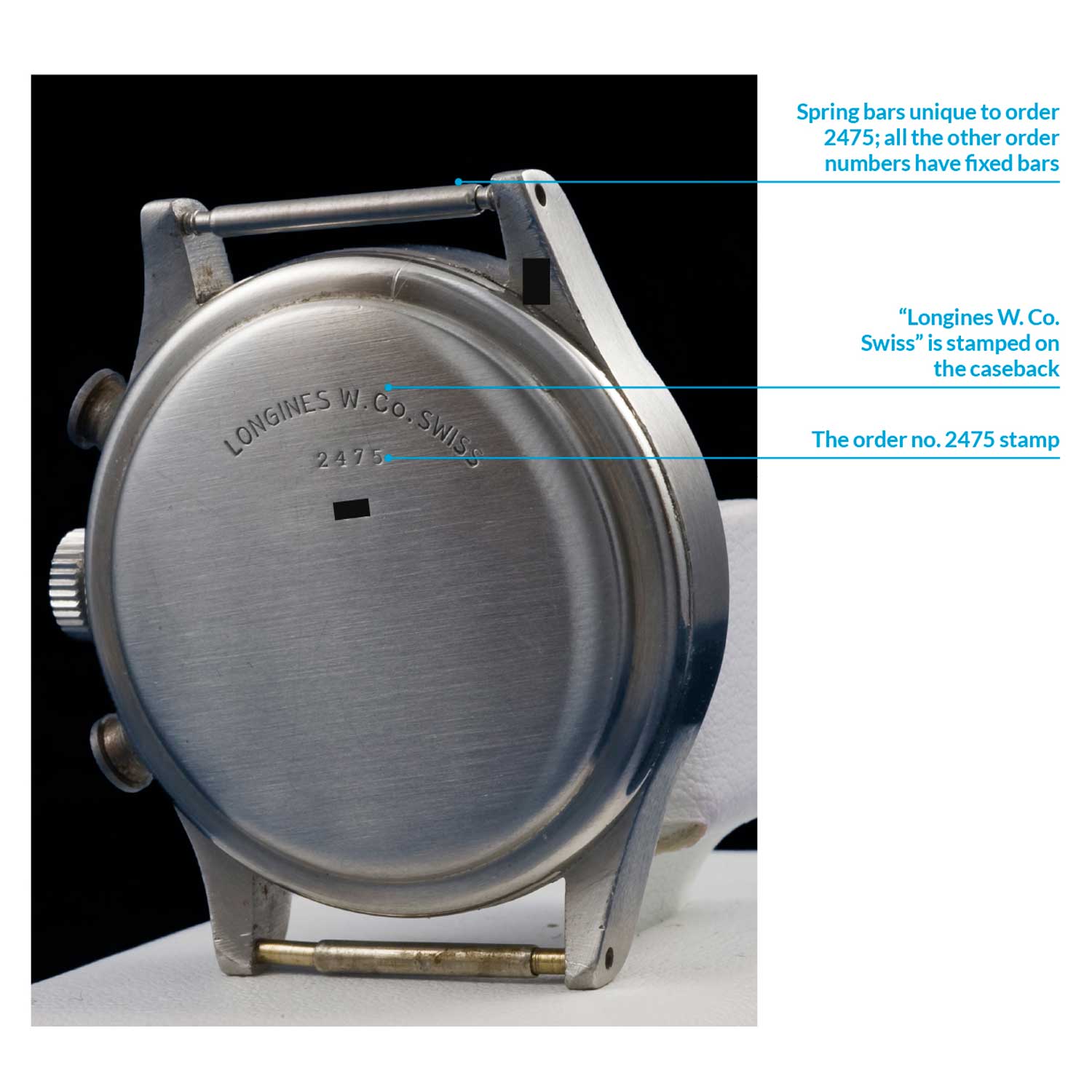
“Longines W. Co. Swiss” and order no.2475 stamped on the caseback
Pictured here is the second known example of the 13ZN “Mushroom Pusher” with order 2475 — the second one ever seen on the market. The serial number is only six numbers away from the previous 2475 shown, and obviously it shares all the same characteristics: spring bars, same fixing clamp (like a Tre Tacche), same caseback, etc.
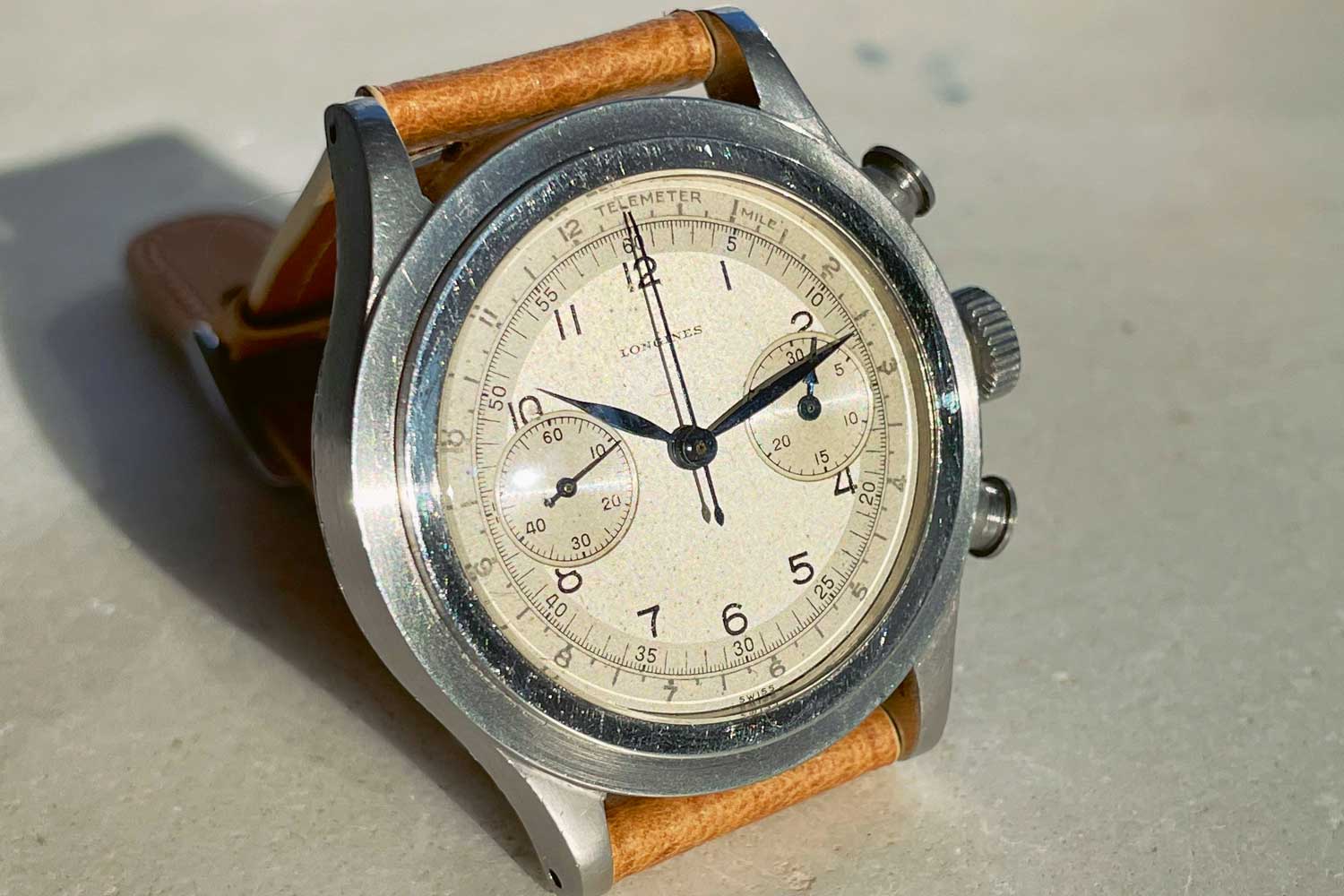
The second known example of the 13ZN “Mushroom Pusher” with order 2475
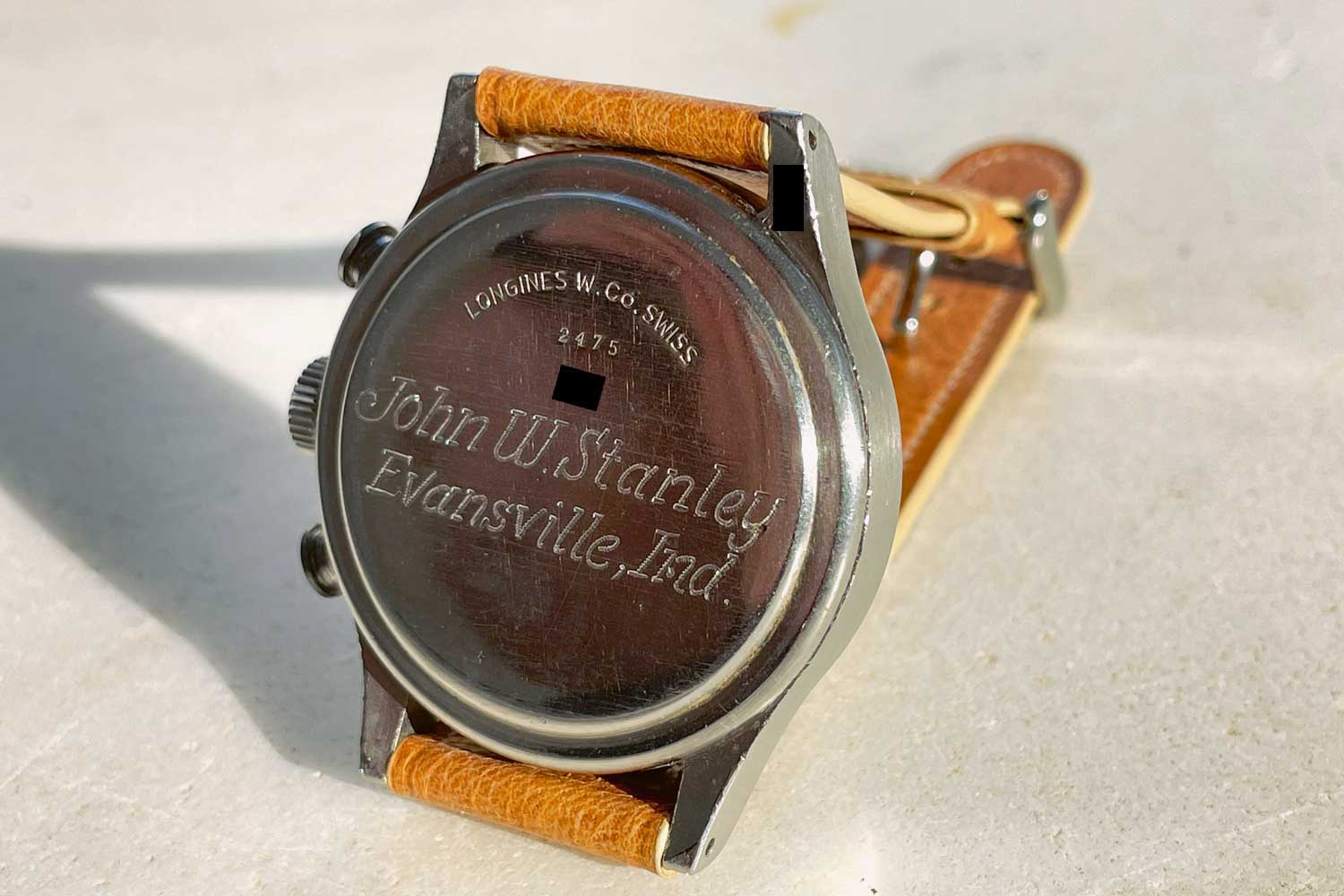
The second known example of the 13ZN “Mushroom Pusher” with order 2475
Order 2352
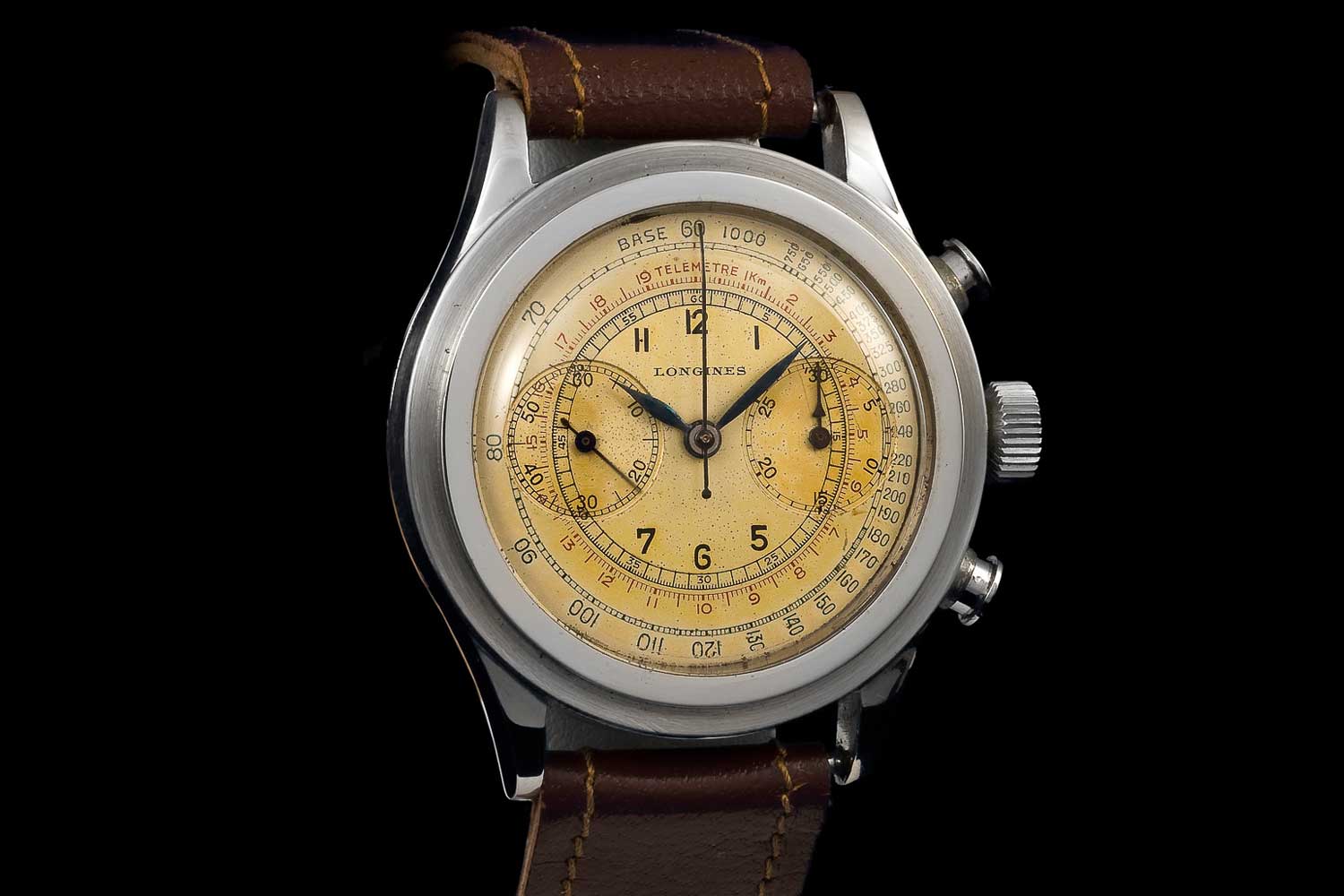
Ref. 4270 with order no. 2352 with a two-tone matte silvered dial by Stern Frères featuring black Arabic numerals.
Another extremely rare example of the order 2352 comes with a glossy black galvanic (brass) dial by Stern Frères. The dial features tachymeter and telemeter scales with white graphic. These black galvanic dials with white graphic are among the rarest variants and also some of the most desirable, as they are nearly impossible to find, especially in the mushroom pusher case. It should also be emphasised that these cases were all produced by the piece (one by one) and, as such, there are small variations in the cases even within the same order number.
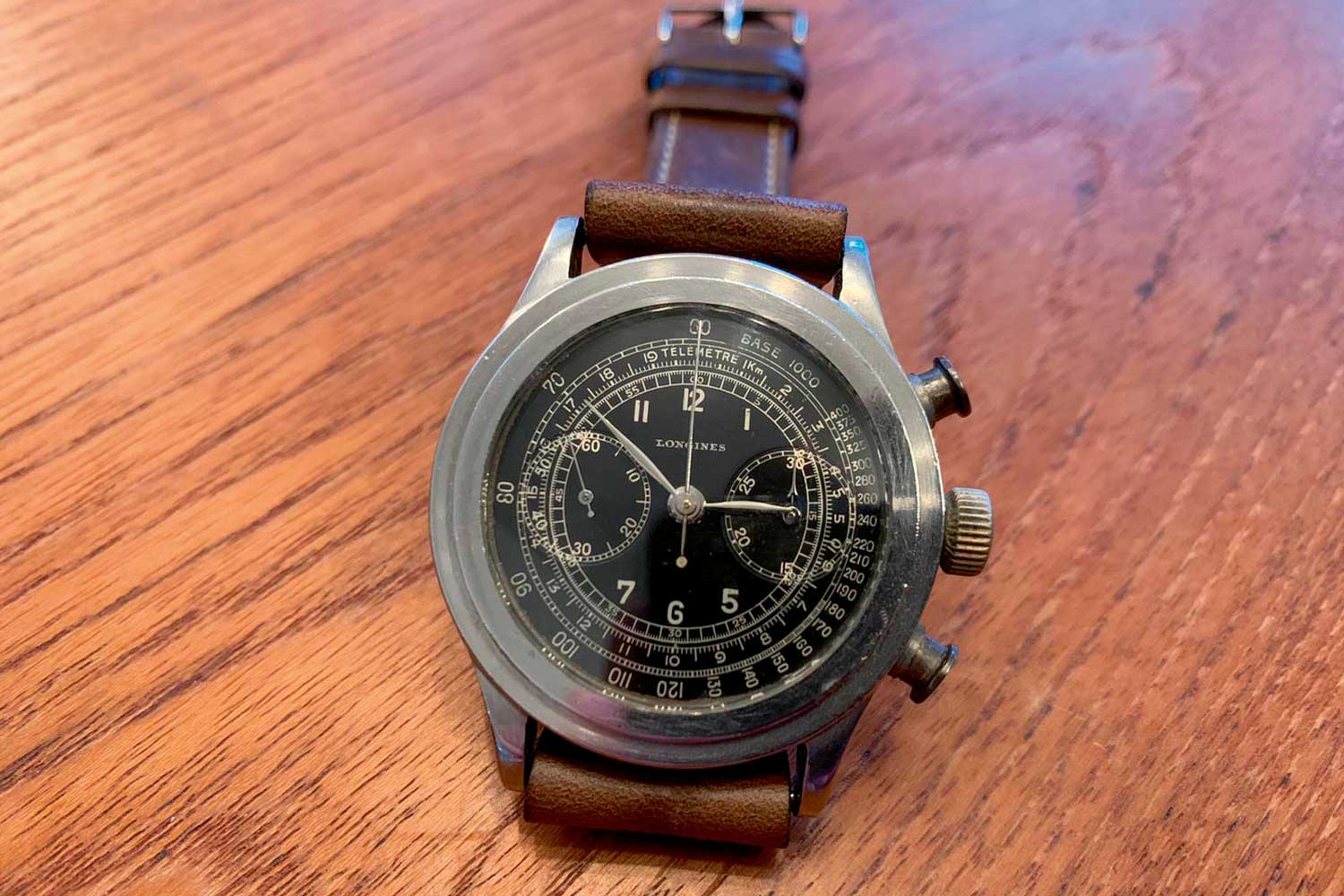
An extremely rare example of the order 2352 with a glossy black galvanic (brass) dial by Stern Frères.
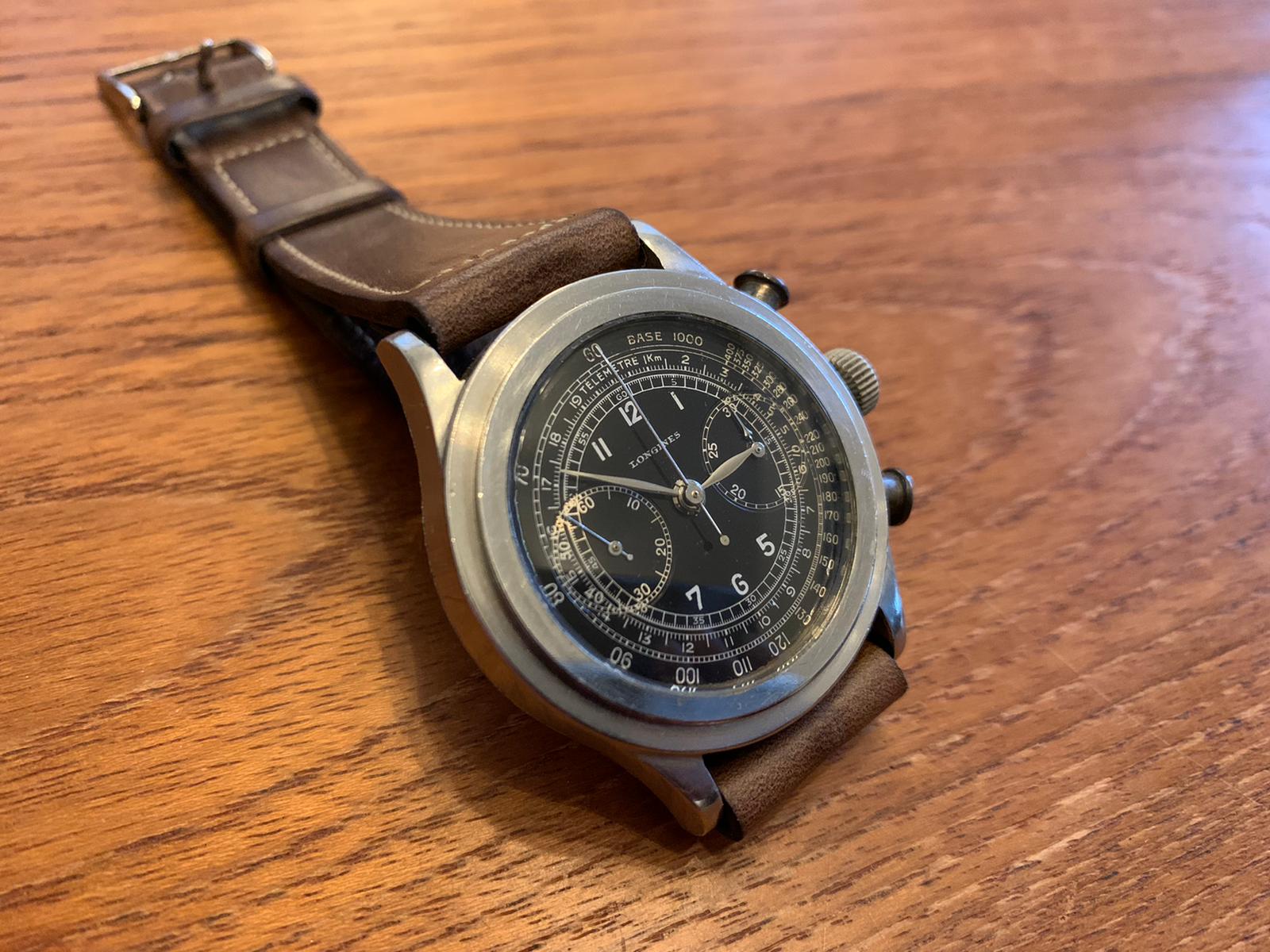
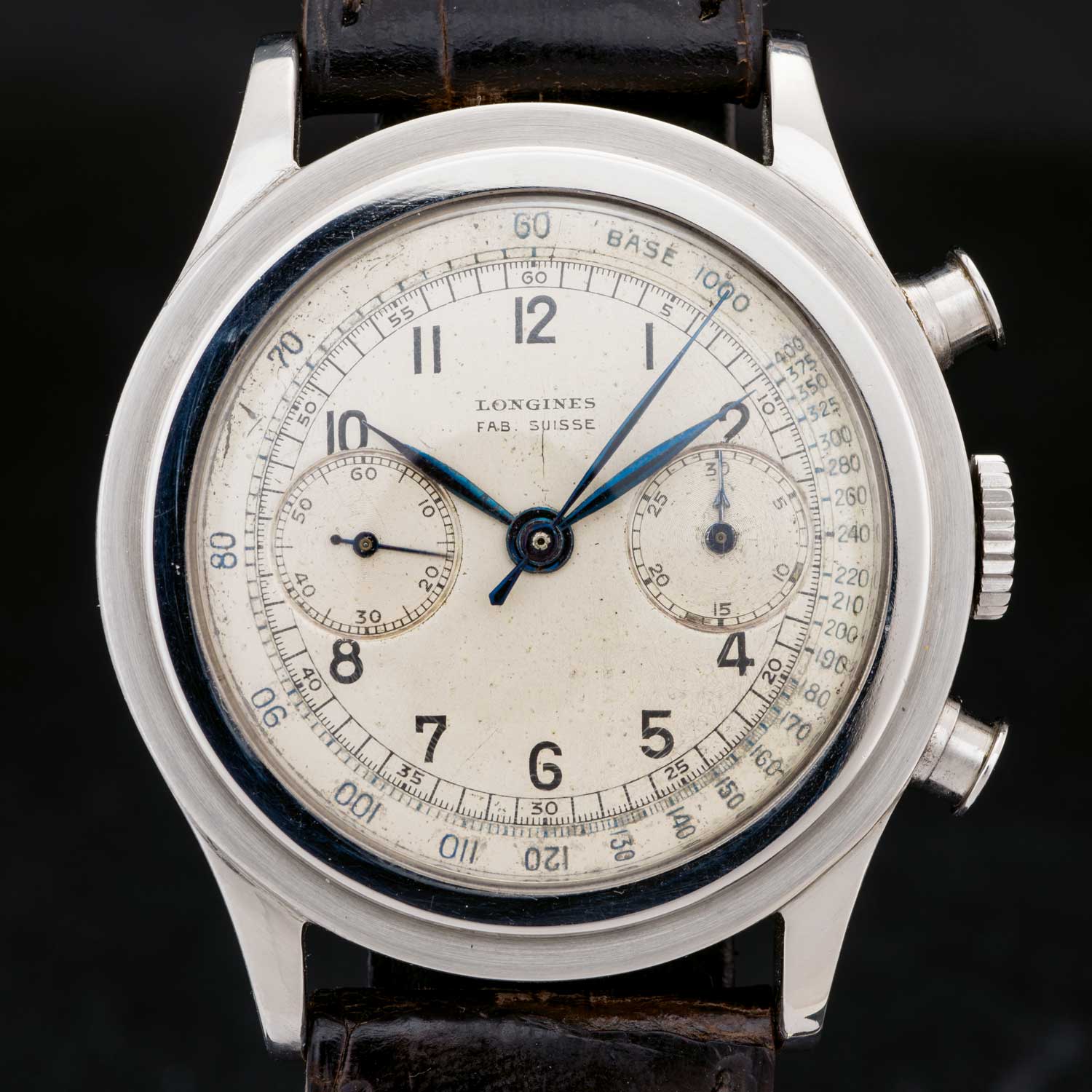
The original “Fab Suisse” dial is white with a tachymeter scale.
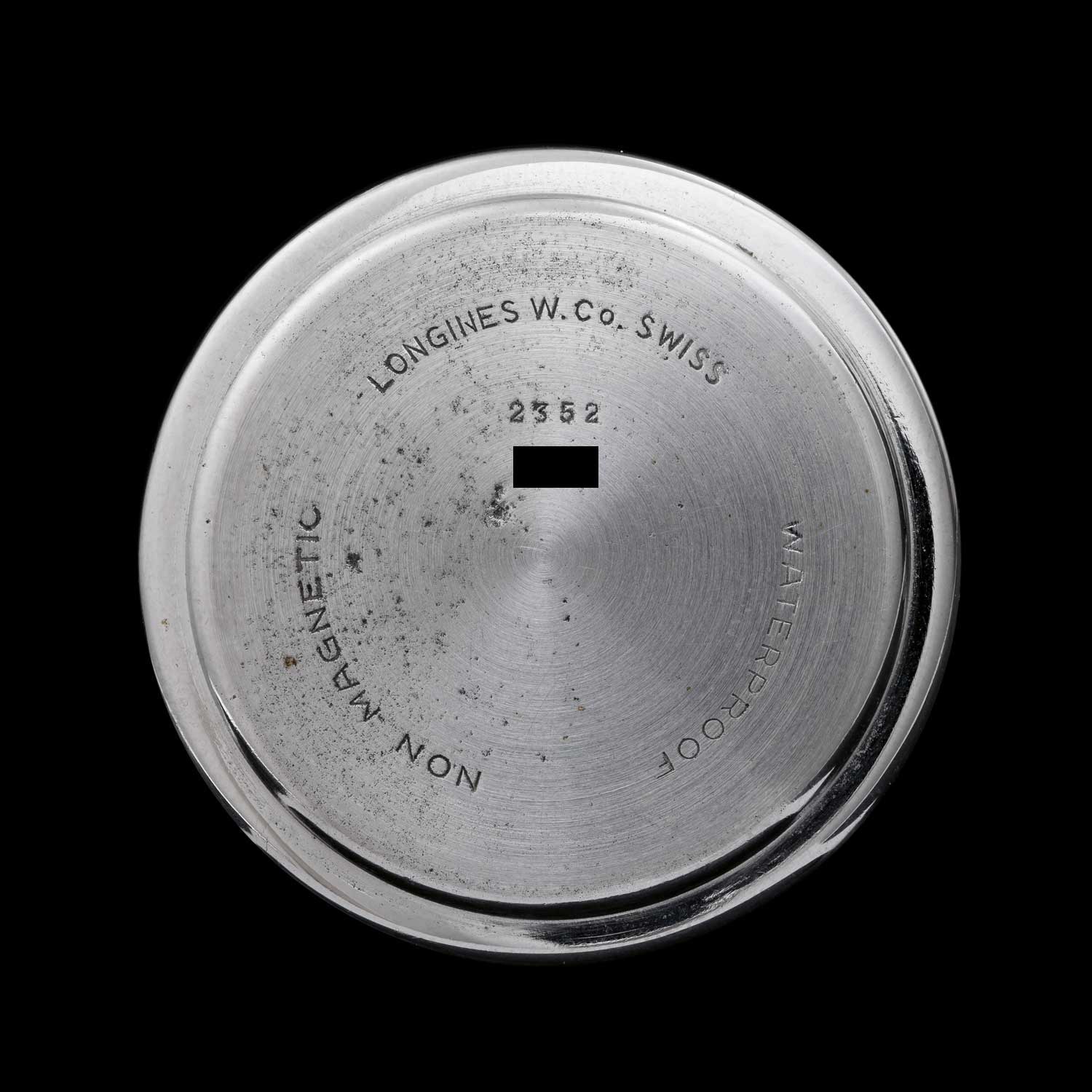
The ref. 4270 with a stainless steel snapback, stamped with the order no. 2352 and the words “waterproof”and“nonmagnetic”.
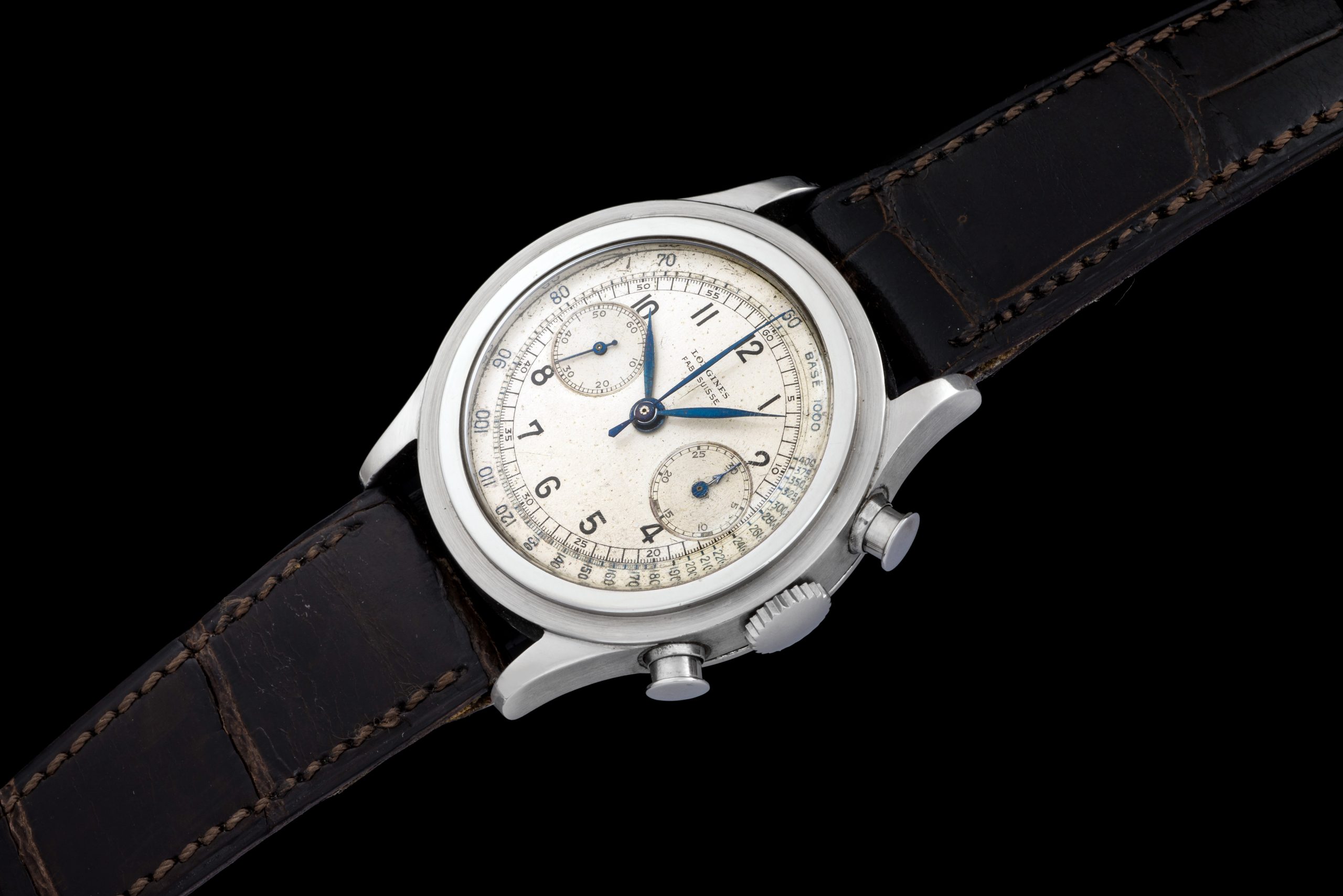
Order 2160
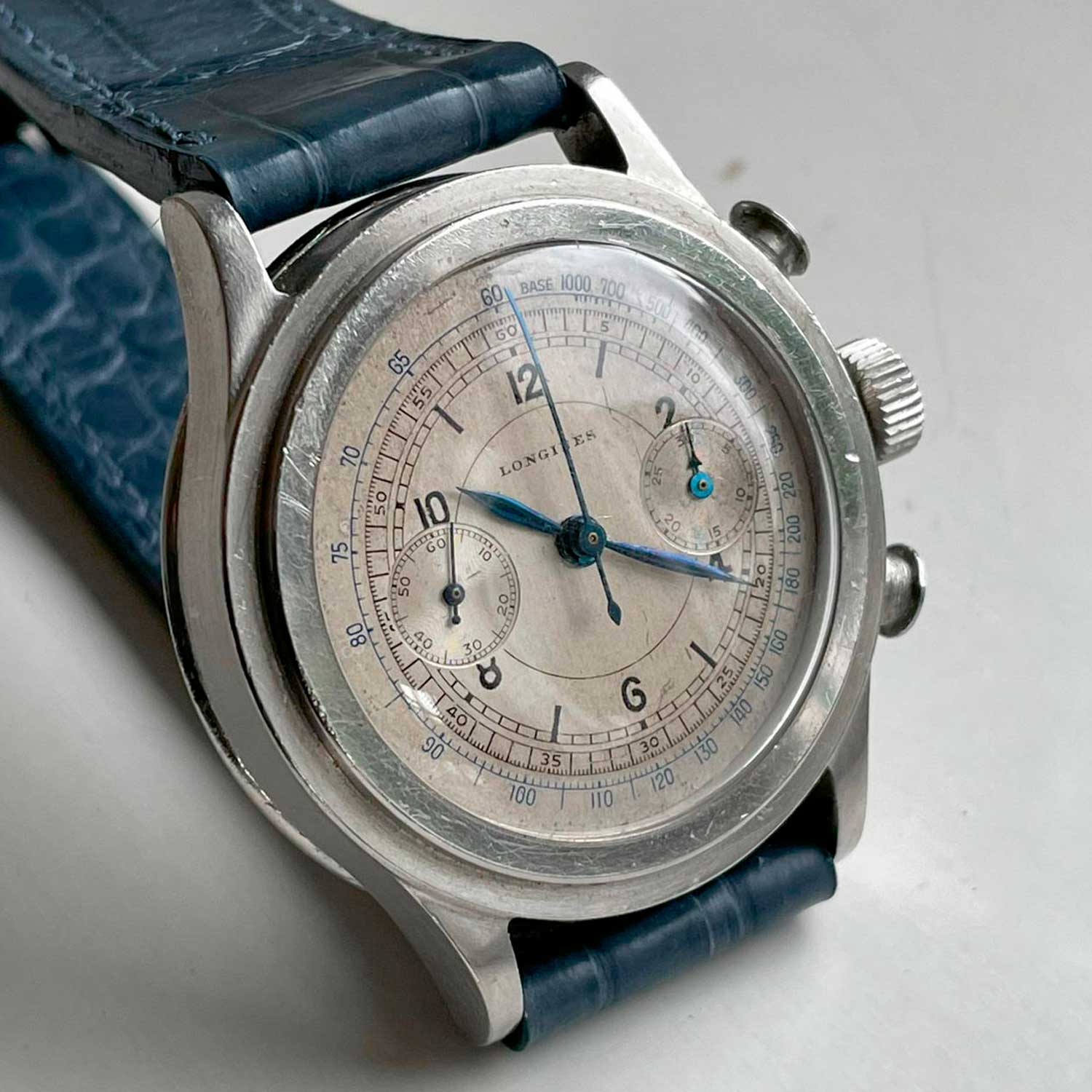
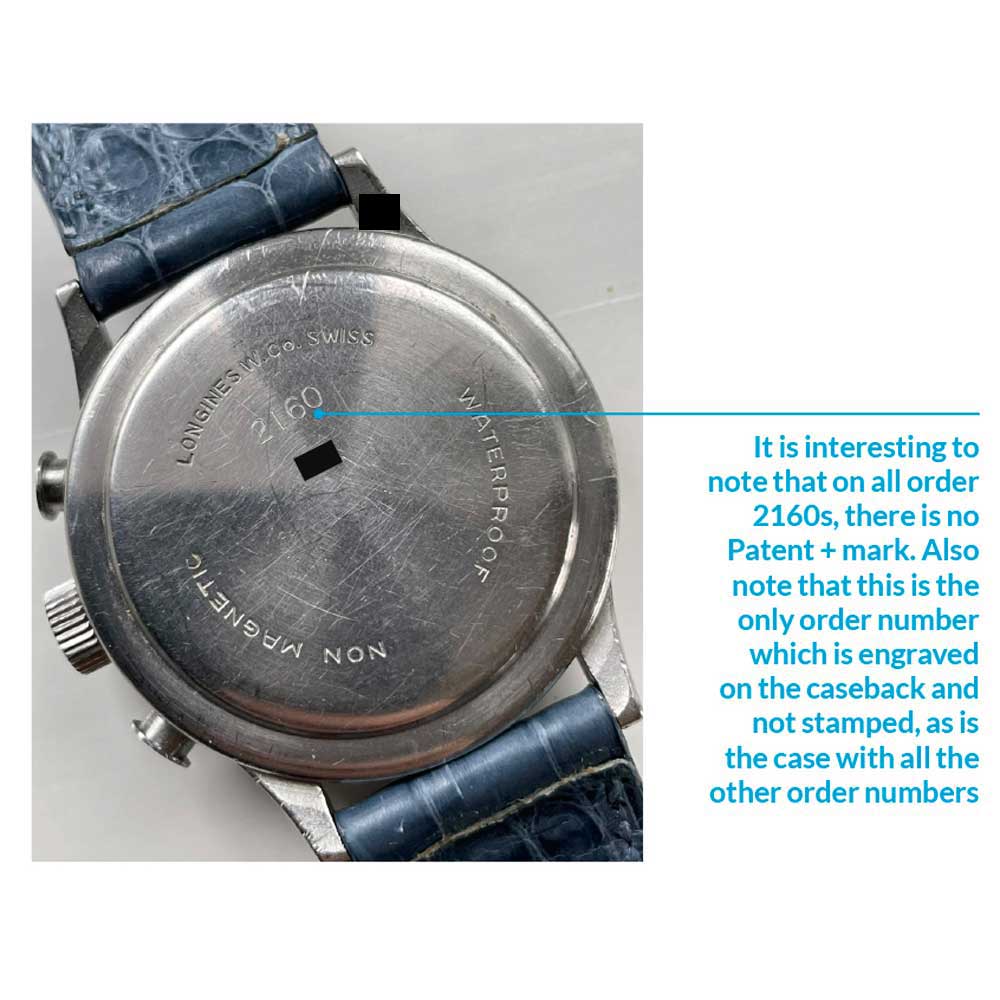
This is the only order number which is engraved on the caseback and not stamped, as is the case with all the other order numbers.
The Movement
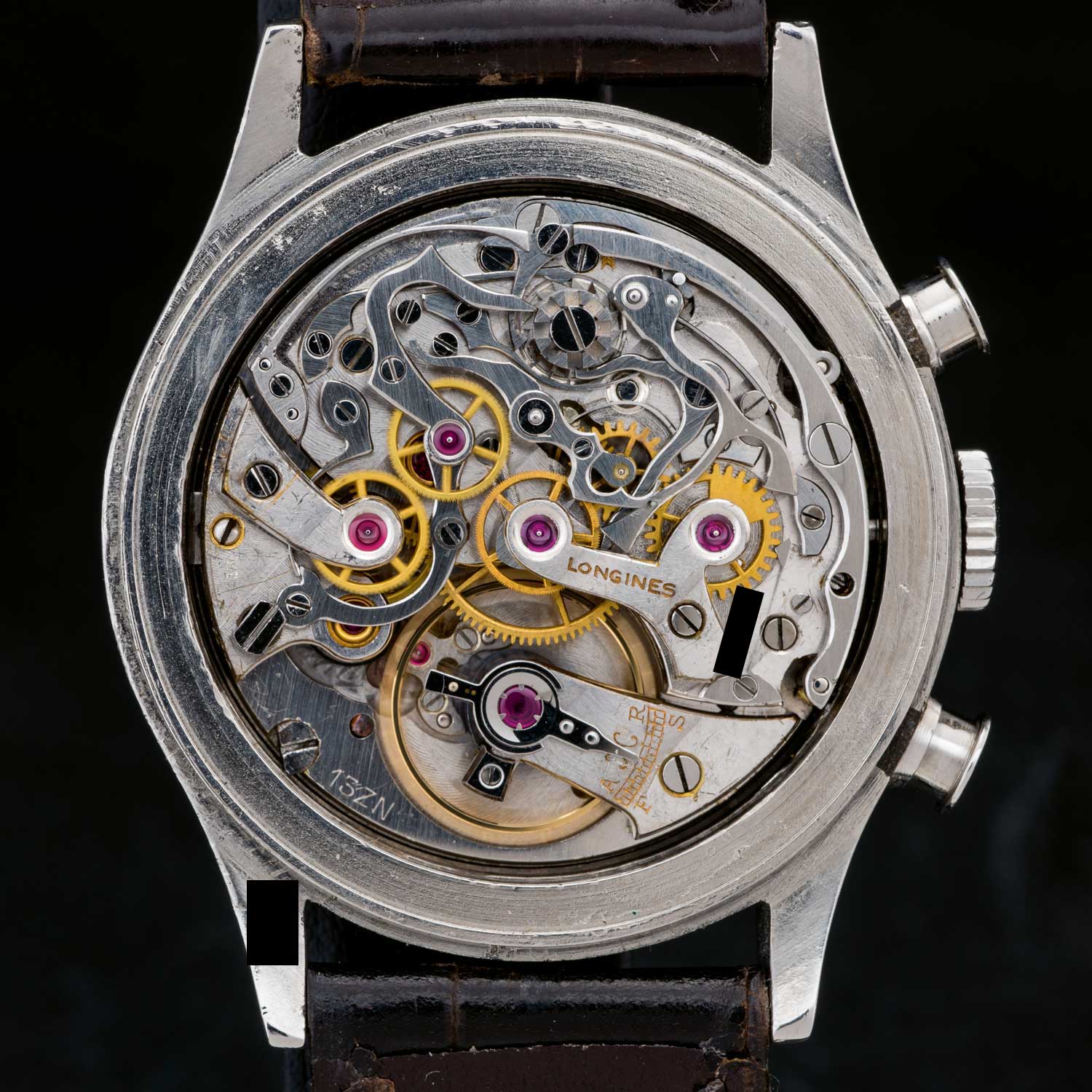
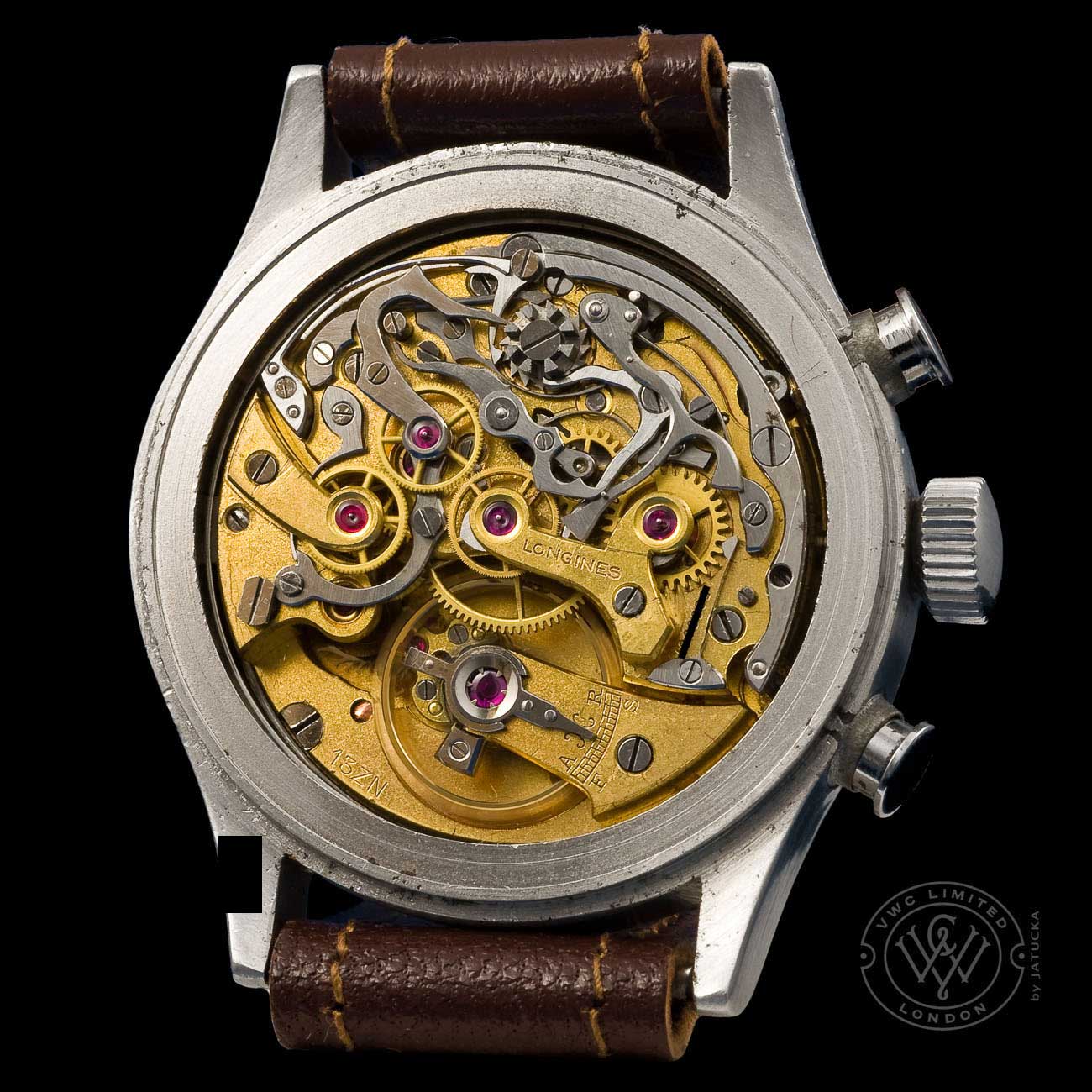
The real difference between a “standard” 13ZN reference and the 13ZN “Mushroom Pusher” is the way in which the movements are attached to the cases. The ref. 4270s have (in most cases, although there are one or two exceptions), a double fix, i.e., an extra fixing clamp, as can be seen in the image here.
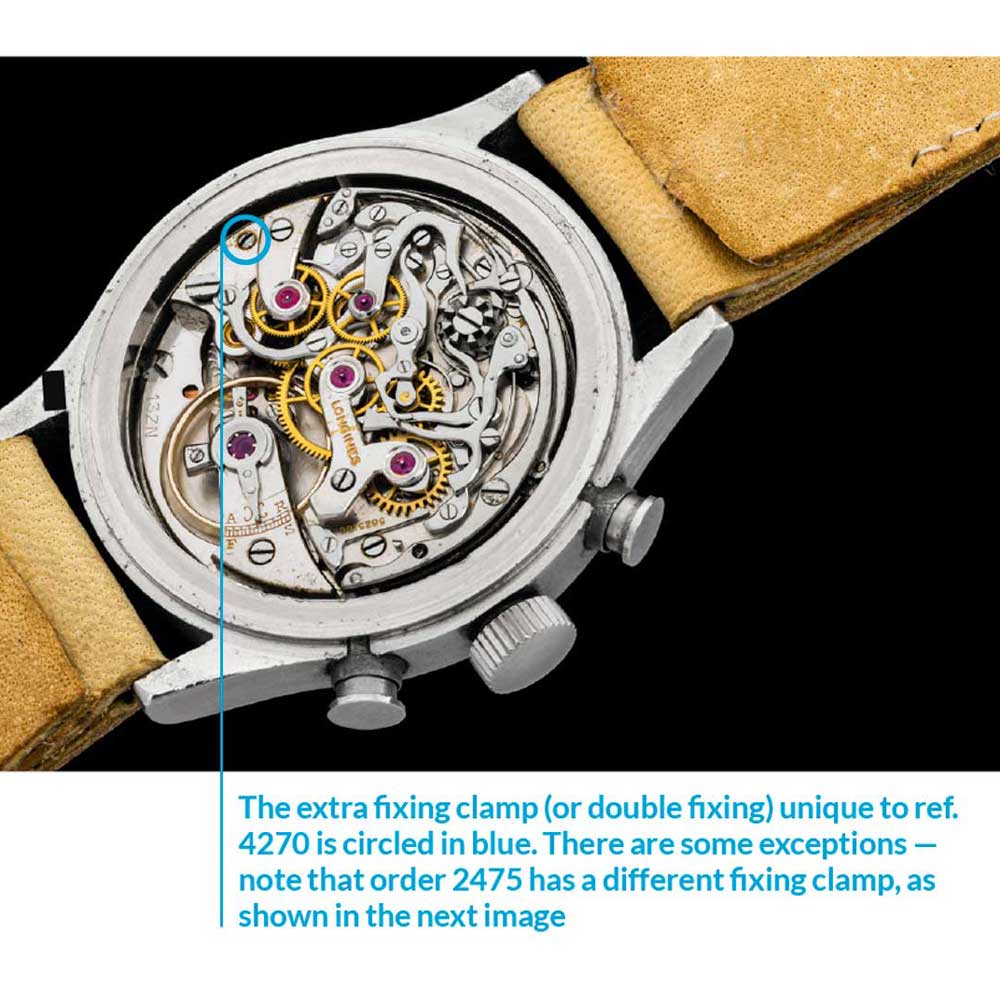
The extra fixing clamp (or double fixing) unique to ref. 4270 is circled in blue. There are some exceptions — note that order 2475 has a different fixing clamp, as shown in the next image
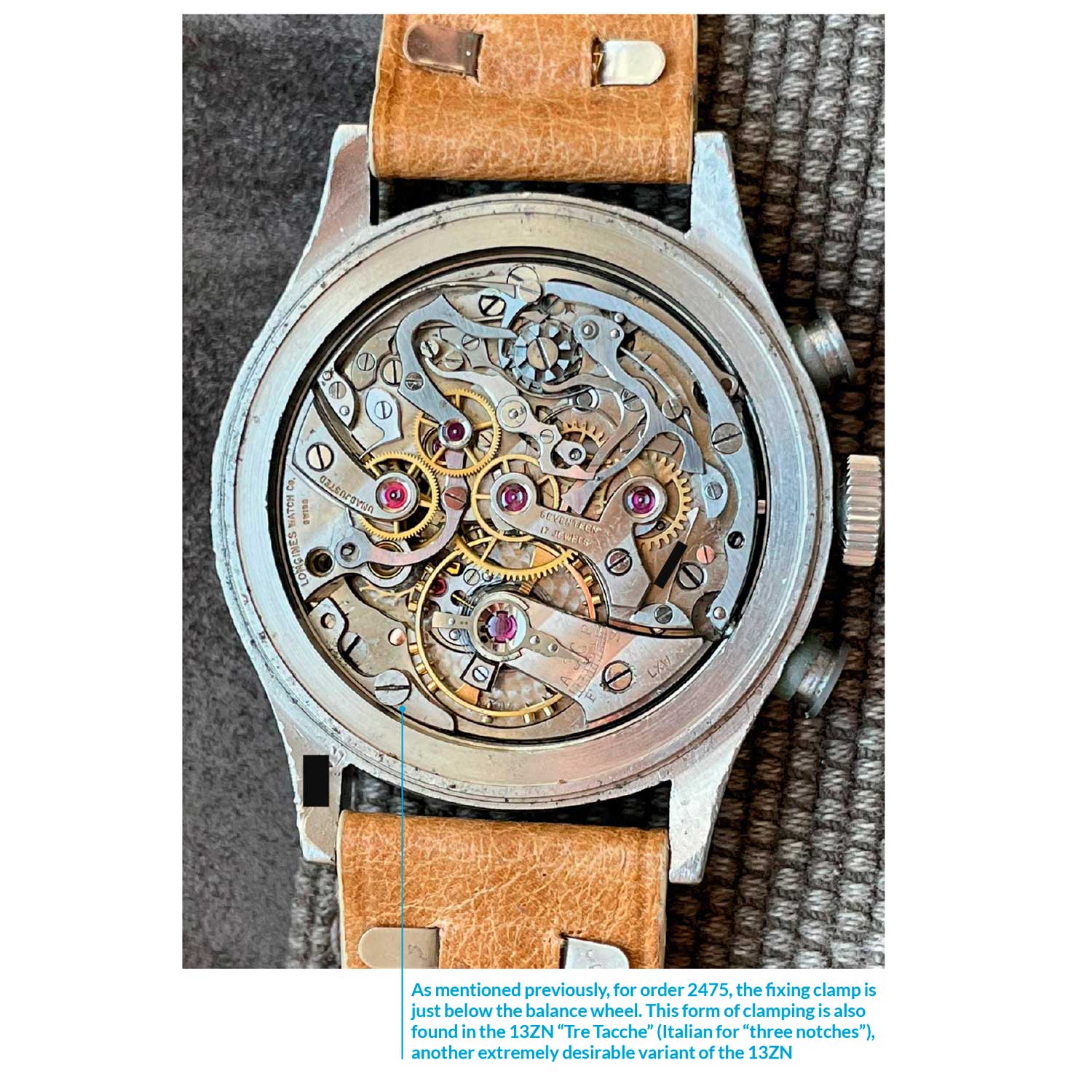
As mentioned previously, for order 2475, the fixing clamp is just below the balance wheel. This form of clamping is also found in the 13ZN “Tre Tacche” (Italian for “three notches”), another extremely desirable variant of the 13ZN
Final Thoughts and Aknowledgements
The 13ZN “Mushroom Pusher” or “Pulsanti ad Ombrello”, rightly so, is one of the most coveted vintage watches
from the ’30s and ’40s. It is unique, both in terms of its rarity and its design, and probably the “perfect” size at 37.5mm. Even more so, it reflects a pursuit of excellence, a moment in time in which Longines strived to make the best waterproof chronograph possible. In many ways, their efforts resulted in the birth of the modern chronograph or chronometer as we know it. And to top it all off, the early Longines chronographs are, in my opinion, some of the most aesthetically beautiful watches that you can find from the period. To find a comparable waterproof chronograph from another brand, I cannot think of one, other than the Patek Philippe ref. 1463, which was not to be produced until 1949.
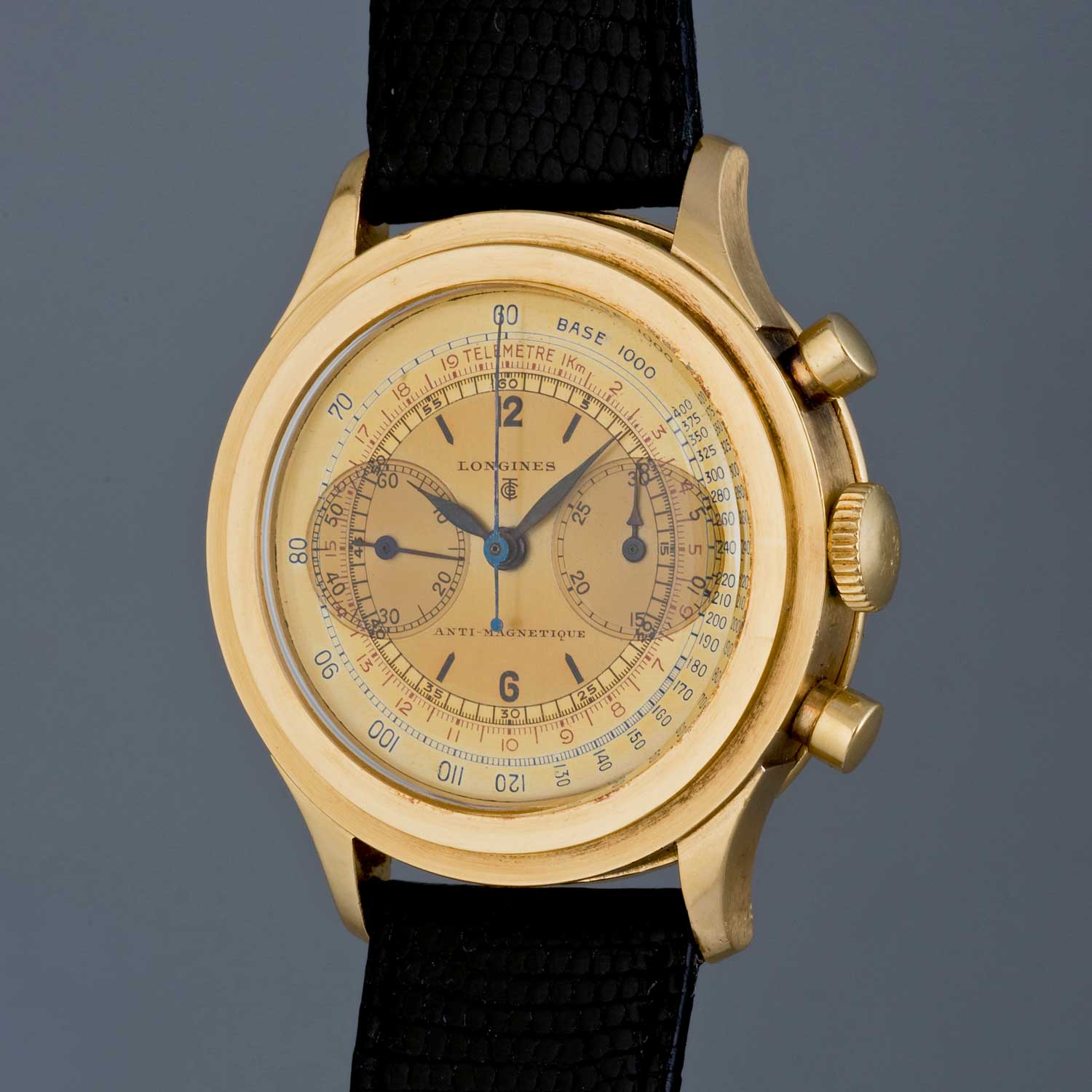
Ref 4270 in 18k gold, sent to Ostersetzer Milano 1941
I am grateful to Glenn Mariconda and Adonya Ourshalimian for their detailed images, and to Alfredo Paramico, Auro Montanari and Andrea Foffi for the images of the gold reference 4270.
I would also like to thank Roberto Randazzo for supplying images of many of the watches, and to Guus, Tomo, Gianca and Dave for the images of their watches. Also, a big thank you to Ms Syrte for her kind help in the translation of the patent doc.
If this article interests you, there will be a longer form version published in an upcoming book by Longines collectors, Treasures of Longines, highlighting some of the most important and interesting Longines watches ever seen, so please look out for it!
